Do you dream of lush greenery, fresh herbs, or vibrant flowers, but feel limited by your apartment’s small footprint? Many urban dwellers face the challenge of cultivating a garden in confined spaces, but a lack of ground doesn’t mean a lack of growing potential. Vertical gardening offers an innovative solution, transforming unused walls and overlooked corners into thriving green havens.
This guide empowers you to elevate your gardening game, literally. We will explore 15 inventive vertical garden ideas perfectly suited for balconies, patios, and small apartments. You will discover practical strategies for selecting the right systems, choosing appropriate plants, and maintaining your elevated oasis with minimal effort. Get ready to turn your apartment into a green sanctuary, even if you only have a few square feet to spare.
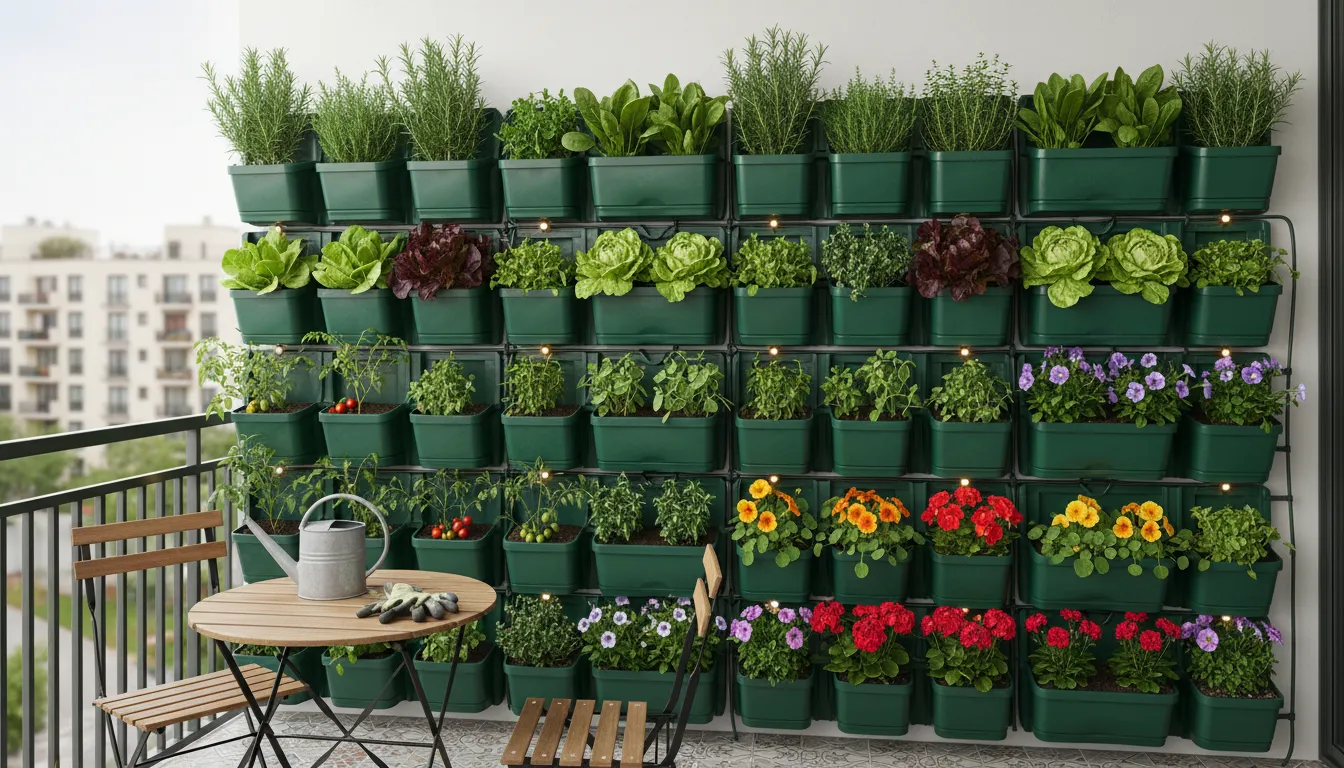
What is Vertical Gardening and Why It’s Perfect for Apartments
Vertical gardening involves growing plants upward rather than outward, utilizing vertical surfaces such as walls, fences, or specially designed structures. This ingenious method maximizes space, making it an ideal choice for anyone with limited horizontal area. Instead of spreading across the ground, your plants climb, cascade, or nestle into tiered containers, transforming blank spaces into living art.
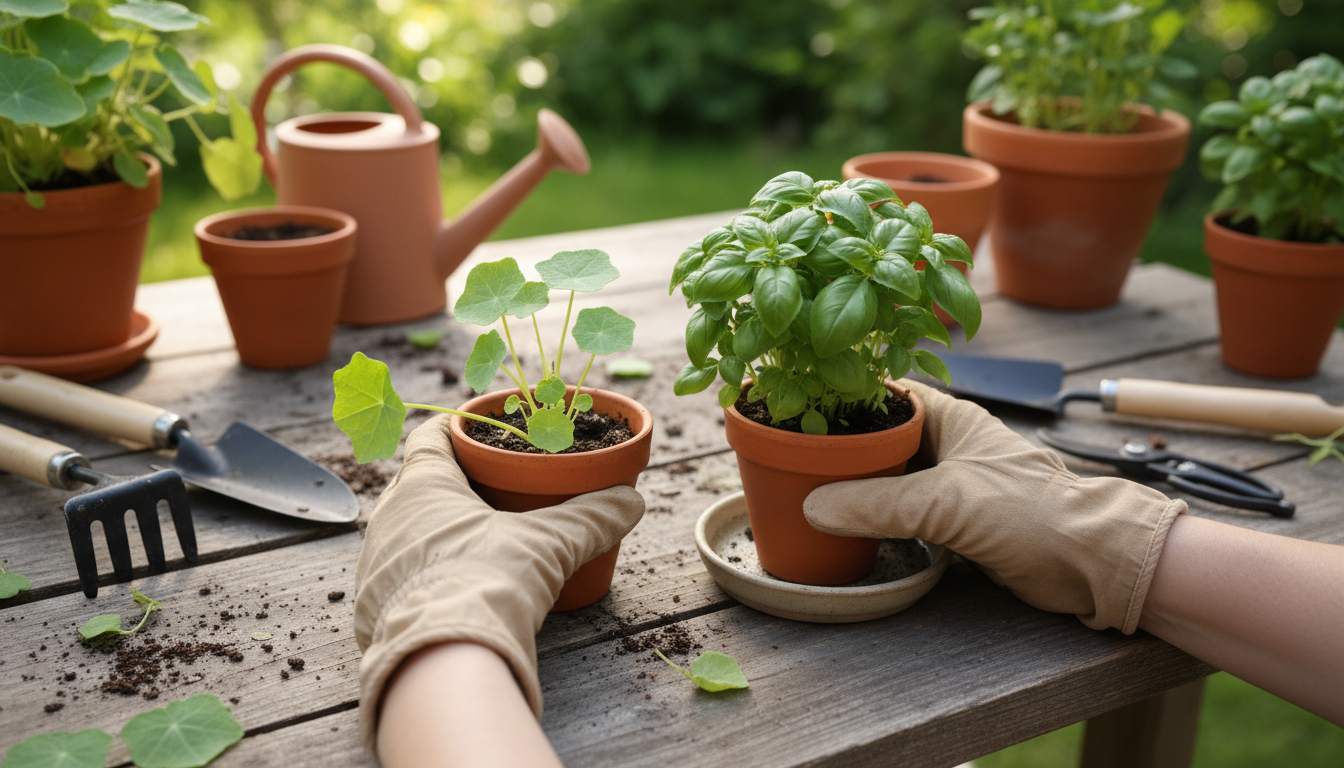
The Advantages of Going Vertical
Adopting a vertical garden in your apartment offers numerous benefits:
- Space Maximization: This is the most obvious advantage. Vertical gardens allow you to grow significantly more plants in a small footprint. A bare wall or balcony railing becomes a vibrant productive space, turning previously unused areas into lush gardens. For apartment dwellers, this means greening up small balconies, patios, or even indoor walls without sacrificing valuable floor space.
- Improved Air Quality: Plants naturally filter pollutants from the air, increasing oxygen levels. A vertical garden, especially indoors, can significantly improve the air quality in your living space, making your home feel fresher and more vibrant. Research shows houseplants can remove up to 87% of air toxins in 24 hours.
- Aesthetic Appeal: Vertical gardens are stunning. They create living art installations, adding texture, color, and life to any environment. Whether you choose a minimalist design with sleek wall planters or a bohemian cascade of repurposed materials, your vertical garden will be a focal point and conversation starter.
- Increased Privacy and Noise Reduction: A dense vertical garden on a balcony can act as a natural screen, offering increased privacy from neighbors. The foliage also helps absorb sound, contributing to a quieter, more peaceful atmosphere in your outdoor space.
- Ergonomic Gardening: Growing vertically often means less bending and kneeling. Many vertical systems allow you to tend to your plants at a comfortable standing height, reducing physical strain and making gardening more accessible for everyone.
- Pest and Disease Control: Elevating plants can reduce their exposure to soil-borne pests and diseases. Improved air circulation around the plants, a natural benefit of vertical setups, also helps prevent fungal issues and mildew.
- Reduced Water Usage: Many vertical garden systems, particularly those with integrated irrigation, can be very efficient with water. Gravity often assists in distributing water downwards, and some systems recirculate water, leading to less waste compared to traditional in-ground gardens.
Vertical gardening is not just a trend; it’s a smart, sustainable way to bring nature into your small apartment or urban home. It is an accessible entry point into gardening, providing tangible rewards even for beginners.
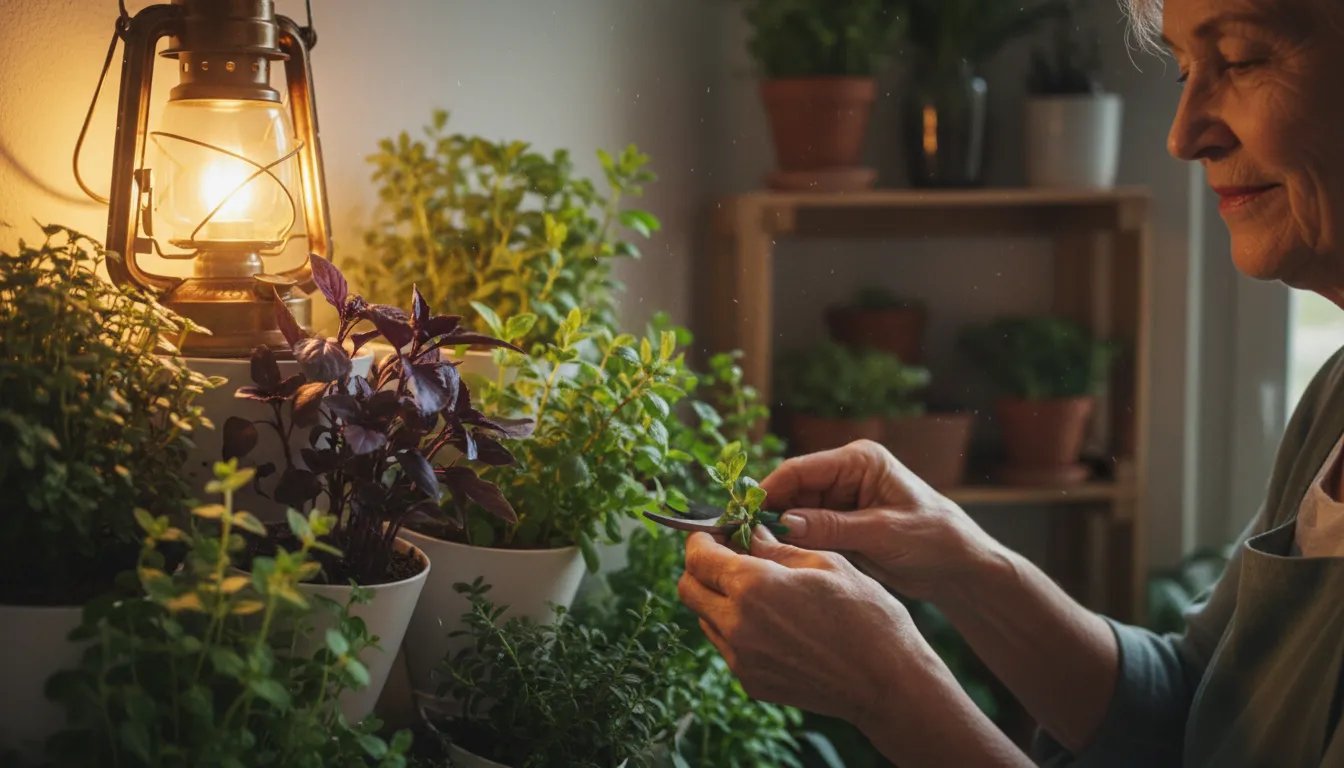
Choosing Your Vertical Garden Style: Key Considerations
Before you dive into specific vertical garden ideas, consider a few crucial factors. Your success depends on matching the right system to your space, lifestyle, and plant choices. Thinking through these points now saves time and effort later, ensuring your vertical garden thrives.

Sunlight Exposure
Sunlight is the most critical element for plant growth. Observe your chosen vertical space throughout the day. Does it receive full sun (6+ hours of direct sunlight), partial sun (3-6 hours), or shade (less than 3 hours)?
- Full Sun: Ideal for most vegetables like tomatoes, peppers, and cucumbers, as well as many herbs and sun-loving flowers. South-facing balconies or walls often provide full sun.
- Partial Sun: Suitable for leafy greens such as lettuce, spinach, and kale, some herbs like mint and cilantro, and flowering plants like impatiens or fuchsias. East or west-facing spots often get partial sun.
- Shade: Best for ferns, hostas, mosses, and certain shade-tolerant herbs. North-facing walls or deeply shaded areas fall into this category.
Accurately assessing light helps you select plants that will truly flourish in your vertical garden.
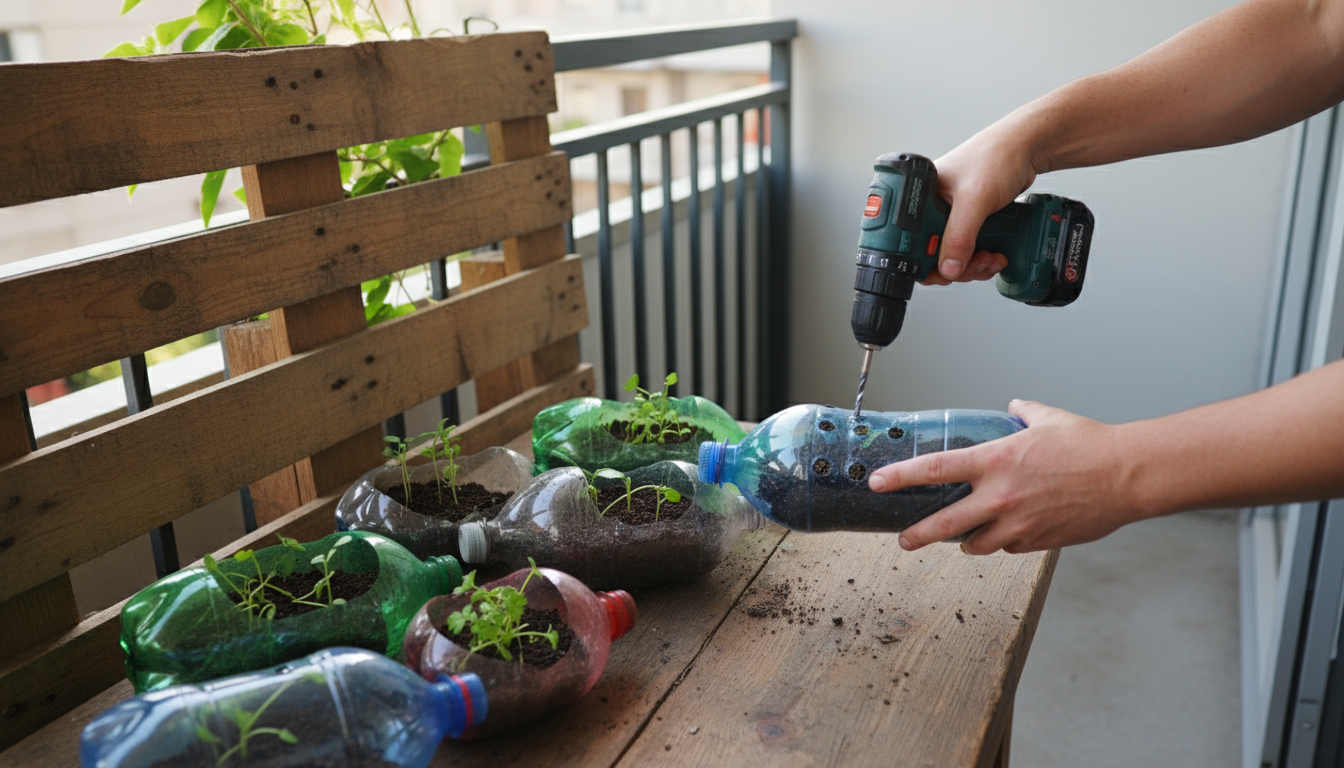
Space and Location
Consider the dimensions of your vertical space. Are you working with a narrow wall, a corner, a railing, or an entire balcony wall? Each location has unique characteristics:
- Balcony Railings: Great for hanging planters or slim tiered systems. Ensure any system you choose is secure and doesn’t impede balcony safety or neighbor relations.
- Exterior Walls: Offer significant potential for larger installations. Check for any structural limitations, landlord restrictions, or proximity to windows.
- Interior Walls: Require systems that contain water effectively to prevent damage. Consider lightweight options and integrate grow lights if natural light is insufficient.
- Corners: Excellent for ladder-style shelves or custom corner units that utilize often-overlooked space.
Measure your space precisely. Knowing the width, height, and depth available helps you select a system that fits perfectly and leaves room for air circulation around plants.

Weight and Installation
A vertical garden, especially once filled with soil, water, and mature plants, can become surprisingly heavy. Assess the weight capacity of your wall, railing, or ceiling. If you rent, always consult your landlord before making any permanent modifications or heavy installations.
- Heavy Systems: Modular living walls or large pallet gardens require robust mounting. Use appropriate anchors and ensure wall studs support the weight.
- Lightweight Options: Fabric pocket planters, hanging shoe organizers, or small hanging pots are excellent for renters or walls with lower weight tolerance.
- Balcony Railings: Ensure any railing planters are securely fastened and balanced to prevent tipping or falling, especially in windy conditions.
Prioritize safety in installation. Securely mounted systems protect your plants, your property, and those below.
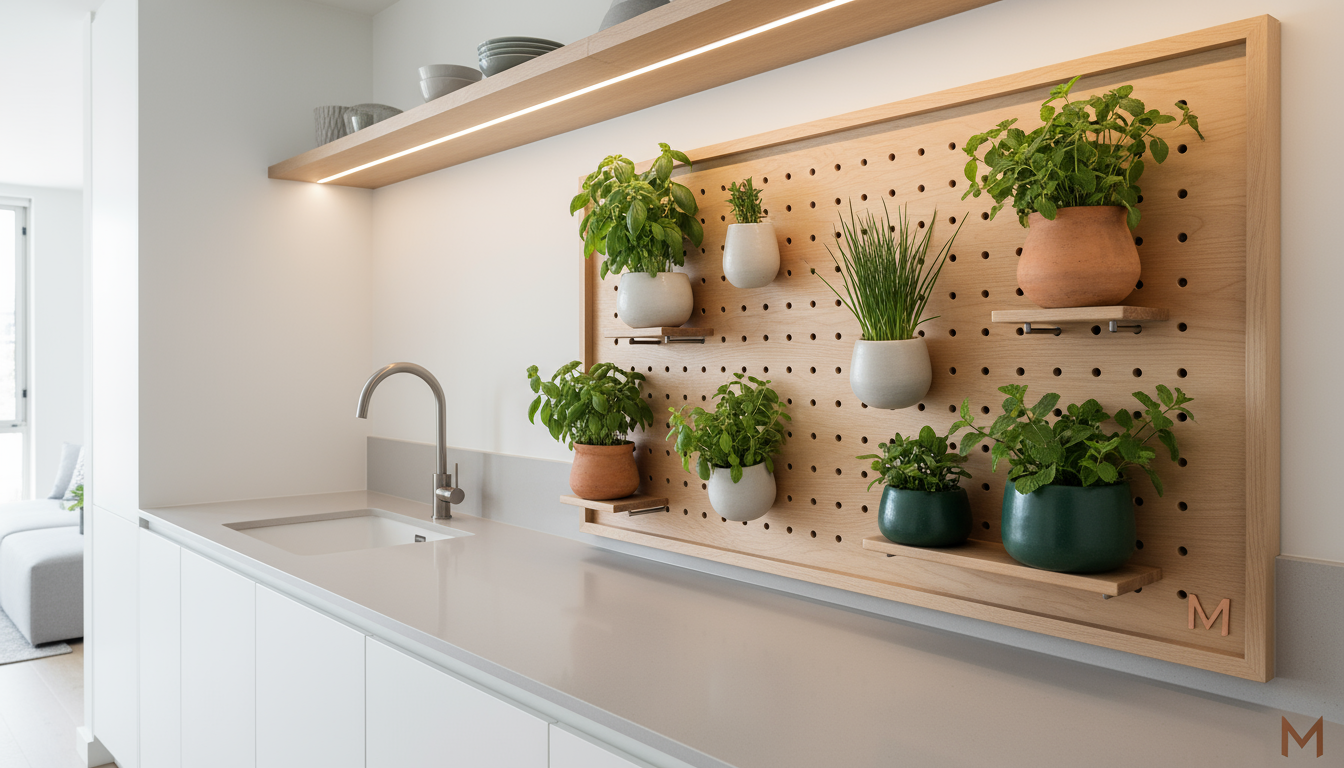
Watering and Drainage
Proper drainage is crucial for plant health, preventing root rot. Vertical gardens often dry out faster than traditional gardens, so consider your watering method:
- Manual Watering: Viable for smaller setups. Use a watering can, ensuring water reaches all plants and any excess drains away without making a mess.
- Drip Irrigation: For larger systems, a simple drip irrigation setup saves time and water. This provides slow, consistent watering directly to the plant roots.
- Self-Watering Systems: Some vertical planters come with reservoirs that wick water up to the plants, reducing watering frequency. These are excellent for busy gardeners.
Regardless of your method, ensure your system has a way for excess water to escape (drainage holes) and, ideally, a tray or trough to catch runoff. This prevents water damage to your apartment, balcony, or neighbors below.
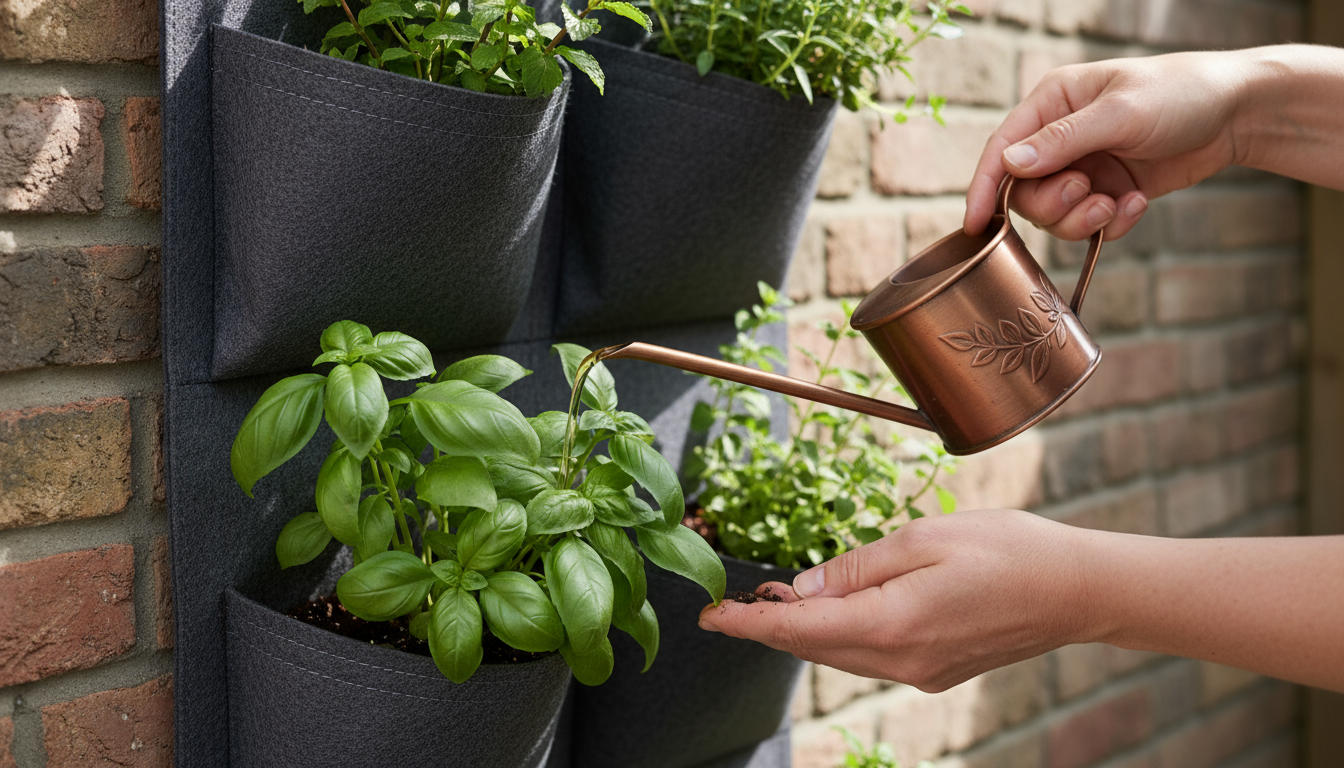
Budget and Materials
Vertical gardens can range from highly affordable DIY projects to professional, custom-built installations. Set a realistic budget before you begin.
- DIY and Repurposed Materials: Pallets, plastic bottles, old gutters, or shoe organizers are incredibly cost-effective. These options are also environmentally friendly, giving new life to discarded items.
- Pre-made Kits: Many garden centers and online retailers offer ready-to-assemble vertical garden kits. These vary in price but provide convenience and a clean, uniform look.
- Custom Systems: For larger, more integrated designs, you might consider professional installation, though this is typically for permanent, extensive setups.
Remember to factor in the cost of soil, plants, and any necessary tools or hardware. Opting for a DIY approach often provides the most budget-friendly entry into vertical gardening, allowing you to scale up as your skills and confidence grow.

15 Creative Vertical Garden Ideas for Apartments
Now, let’s explore some inspiring and practical vertical garden ideas you can implement in your apartment space. Each concept offers unique advantages for different spaces and aesthetics.

1. Pocket Planter Walls
What it is: These systems use fabric or felt pockets, often sewn into a grid, which you attach directly to a wall or hang from a sturdy rod. Each pocket holds a small plant, creating a soft, textural green wall.
Why it’s great for apartments: Fabric pocket planters are incredibly lightweight, making them ideal for renters or spaces where drilling into walls is not an option. You can hang them from curtain rods, balcony railings, or even sturdy adhesive hooks (for very light plants). They are flexible, easy to install, and come in various sizes, from small four-pocket units to large, multi-panel arrays. The felt material provides good insulation for roots and promotes aeration. They are also fantastic for indoor use as long as you manage drainage with a drip tray or line the pockets.
Actionable tips: Choose a system with a waterproof backing if installing indoors. For outdoors, ensure good drainage. Fill pockets with lightweight potting mix. Ideal for herbs, small annual flowers, succulents, or leafy greens. Water carefully, as pockets can dry out quickly, or consider a simple drip line. Look for models made from recycled plastic bottles for an eco-friendly choice.
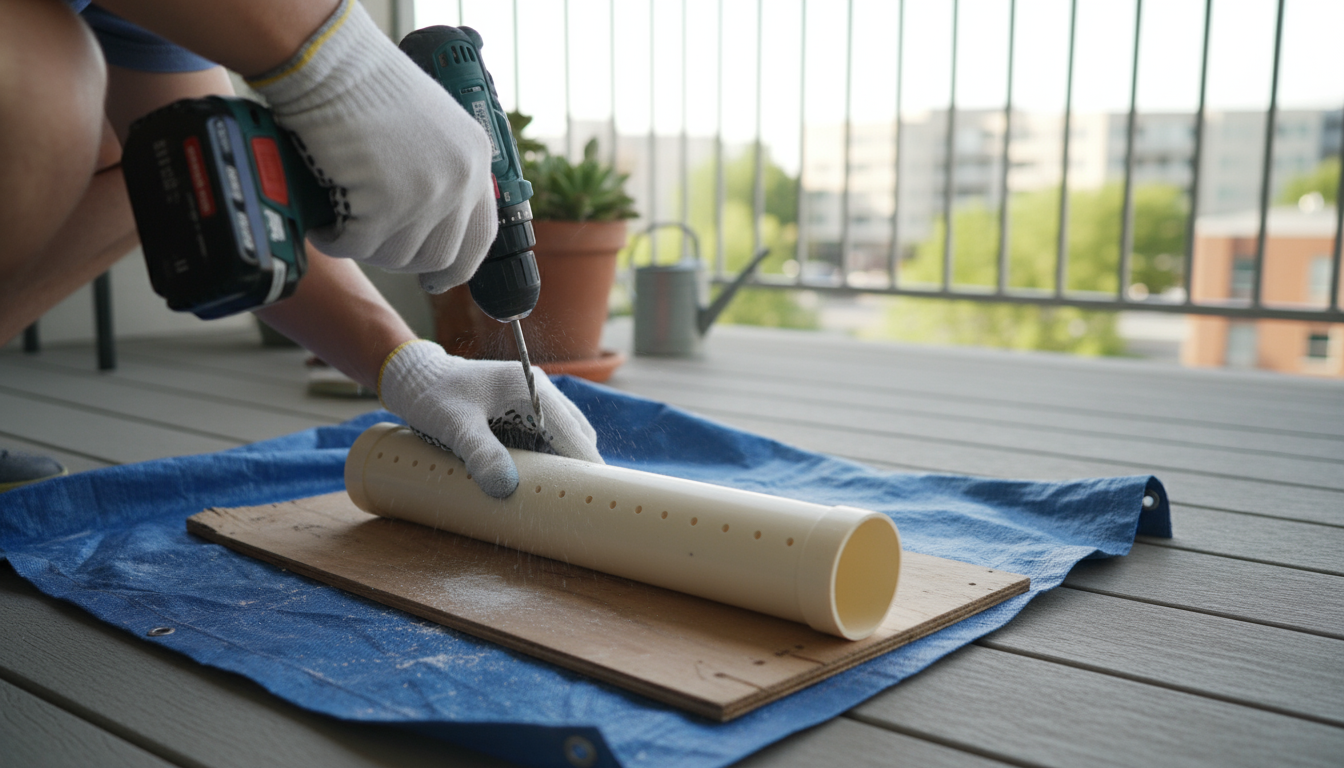
2. Pallet Gardens
What it is: Repurposed wooden shipping pallets are stood upright and transformed into tiered planters. You can either tuck plants directly into the slats or attach small pots to the pallet structure.
Why it’s great for apartments: Pallet gardens are a budget-friendly and sustainable choice, perfect for a rustic or industrial aesthetic on a balcony or patio. They offer multiple planting levels within a compact footprint. Finding free pallets can significantly reduce costs. They are robust and can support a variety of plants, from herbs and flowers to some shallow-rooted vegetables.
Actionable tips: Always source heat-treated (HT) pallets, not chemically treated (MB for Methyl Bromide) ones, for safety. Clean your pallet thoroughly. To create planting pockets, you can attach landscape fabric or plywood to the underside of each slat. Alternatively, mount small terracotta pots or repurposed containers to the pallet’s front. Position the pallet against a sturdy wall for stability or secure it to a railing. Consider painting or sealing the wood for longevity and a splash of color. Plant leafy greens, strawberries, or small annuals.
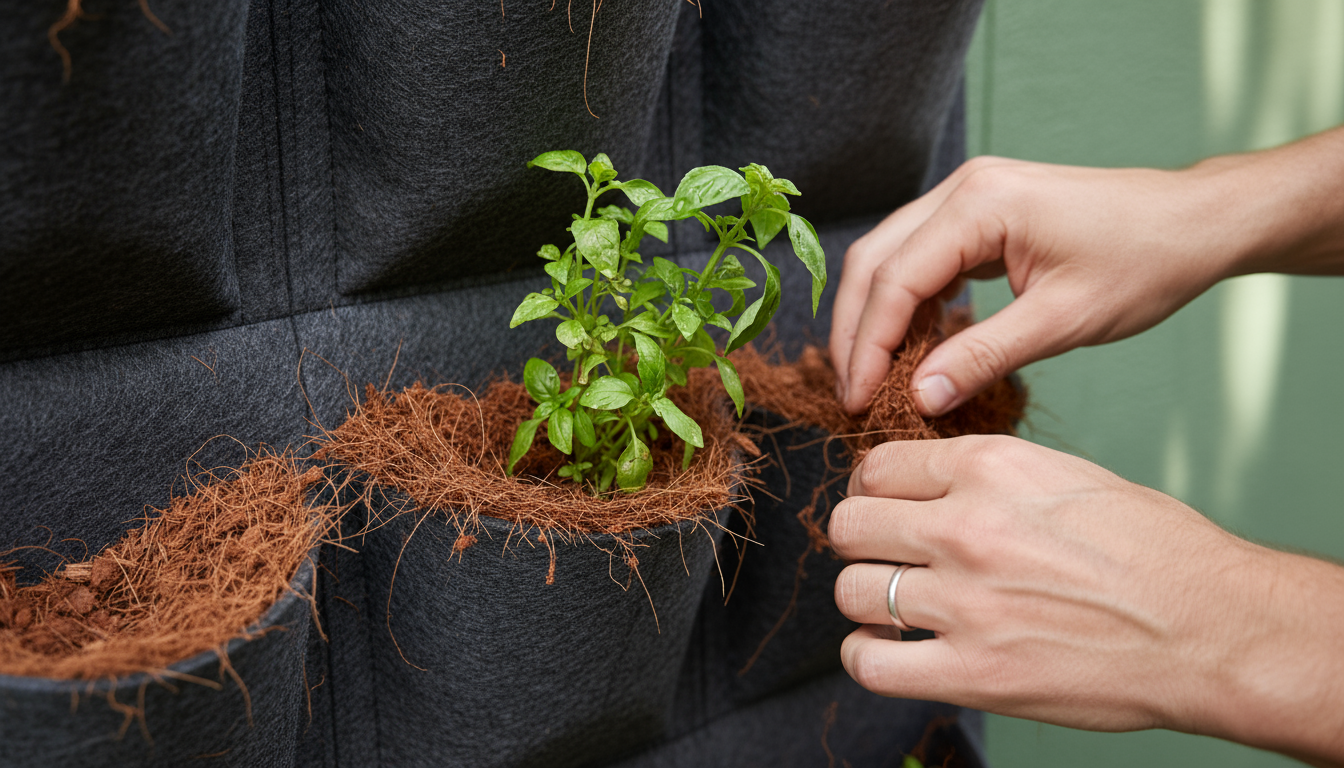
3. Ladder Shelves
What it is: A multi-tiered shelving unit, often resembling a ladder or A-frame, where each shelf holds potted plants. The shelves typically decrease in depth from bottom to top, creating a tiered effect.
Why it’s great for apartments: Ladder shelves are incredibly versatile. They are freestanding, requiring no wall attachment, making them perfect for renters. You can easily move them around your balcony or even indoors. Their tiered design allows maximum light exposure to plants on different levels. They are available in various materials like wood, metal, or bamboo, fitting diverse decor styles.
Actionable tips: Choose a sturdy ladder shelf appropriate for outdoor conditions if placed on a balcony. Select pots with good drainage and place drip trays on each shelf to prevent water from dripping onto lower plants or your floor. Arrange plants strategically: taller plants on lower shelves, sun-lovers on higher, brighter shelves. This system works well for a mix of herbs, flowers, succulents, or small decorative plants. Consider adding small hooks to the sides for hanging lightweight tools or decorative elements.
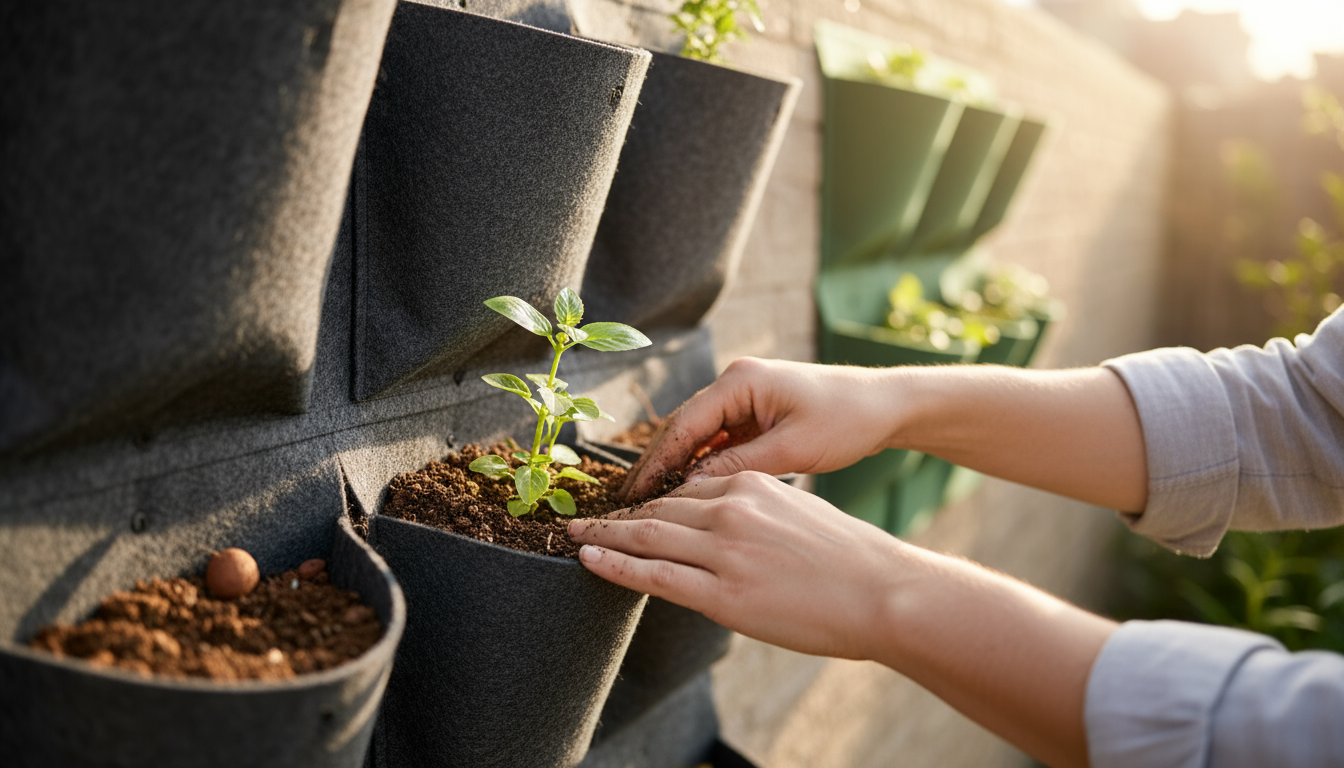
4. Repurposed Bottle Gardens
What it is: Plastic soda bottles are cut, modified, and strung together or mounted onto a frame to create individual planters. These often feature self-watering wicking systems.
Why it’s great for apartments: This is an incredibly sustainable and cost-effective DIY option. It reuses plastic waste and encourages resourcefulness. Bottle gardens are lightweight and can be scaled to fit almost any space, from a single window to an entire balcony wall. The self-watering wick systems (often made from old shoelaces or fabric strips) make them low-maintenance, perfect for busy apartment dwellers.
Actionable tips: Cut plastic bottles horizontally or vertically, ensuring you leave enough space for soil and plant roots. Drill small holes for drainage (if not using a self-watering wick system). You can hang them individually or string them together using wire or rope, creating a cascading effect. Consider painting the outside of clear bottles to prevent algae growth and protect roots from direct sunlight. Ideal for small herbs, microgreens, or succulents. Ensure water reservoirs are refilled regularly.

5. Stacked Crate or Tire Gardens
What it is: Wooden crates, old tires, or sturdy plastic bins are stacked vertically in various configurations to create planting pockets or tiers.
Why it’s great for apartments: Both crates and tires are robust, offer excellent drainage (especially crates), and provide a significant volume for plants, allowing for deeper root growth than some smaller pocket systems. Crates give a rustic, charming look, while tires are incredibly durable and heat-retaining. They are typically inexpensive or free, promoting sustainable gardening.
Actionable tips: For crates, ensure they are clean and sturdy. Stack them securely, perhaps interlocking or fastening them together for stability. You can line the bottom of each crate with landscape fabric to prevent soil loss. For tires, clean them thoroughly and consider painting them to improve aesthetics and prevent leaching. Stack tires in an offset pattern to create planting pockets. Plant larger herbs, small vegetables like bush beans or cherry tomatoes, or cascading flowers. Ensure the base is stable, especially for taller stacks, and consider securing them to a wall if possible.
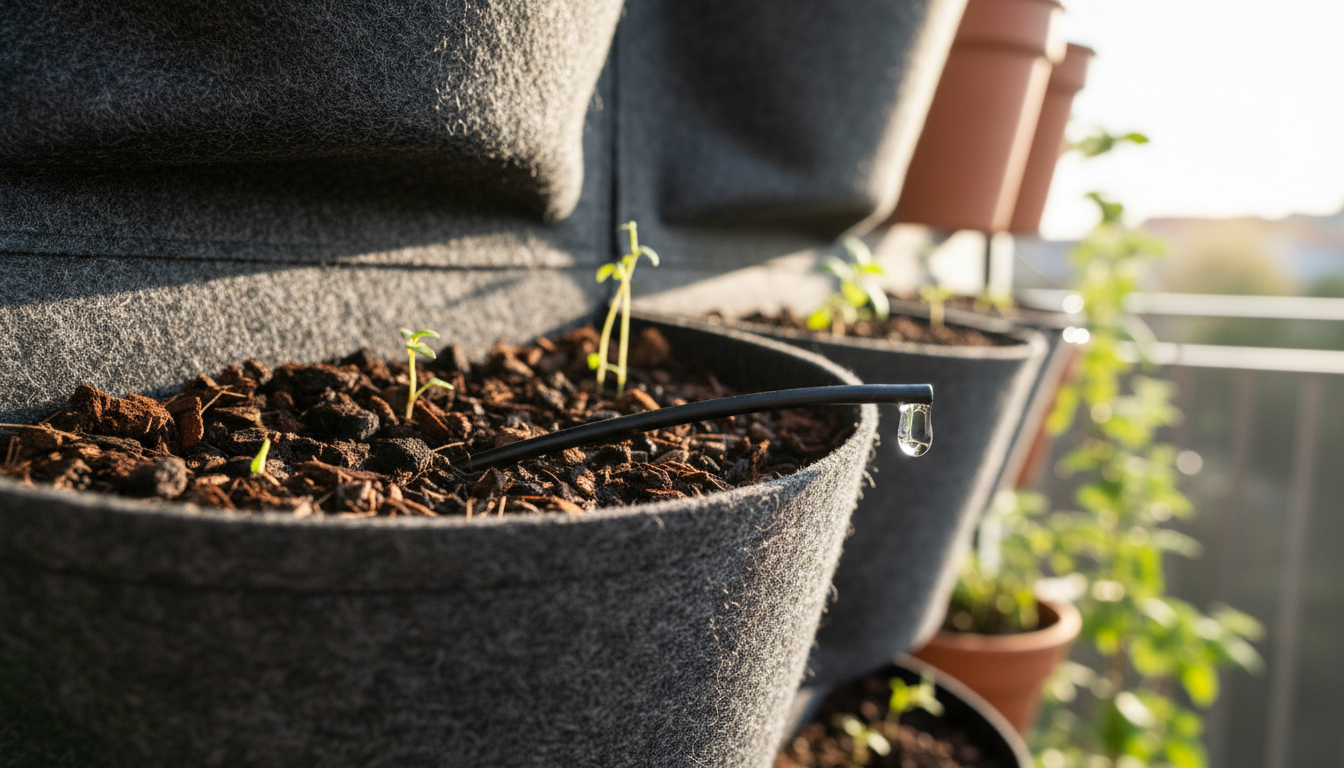
6. Rain Gutter Systems
What it is: Sections of new or repurposed rain gutters are mounted horizontally on a wall or railing, creating long, shallow planters.
Why it’s great for apartments: Rain gutter gardens are excellent for maximizing horizontal growing space on a narrow balcony or fence. They provide a continuous planting bed, making them ideal for linear planting of herbs, greens, or shallow-rooted flowers. They are relatively lightweight and can be purchased inexpensively from hardware stores. Their sleek, uniform appearance offers a modern aesthetic.
Actionable tips: Measure your space and cut gutters to size. Drill drainage holes every 6-8 inches along the bottom of each gutter section. Mount them securely to a wall or railing using appropriate brackets and screws. Consider staggering the gutters to allow more light to lower levels or to create a cascading plant effect. Fill with a good quality, lightweight potting mix. Perfect for lettuce, spinach, radishes, small herbs, or trailing annuals like petunias. Water evenly along the length of the gutter.
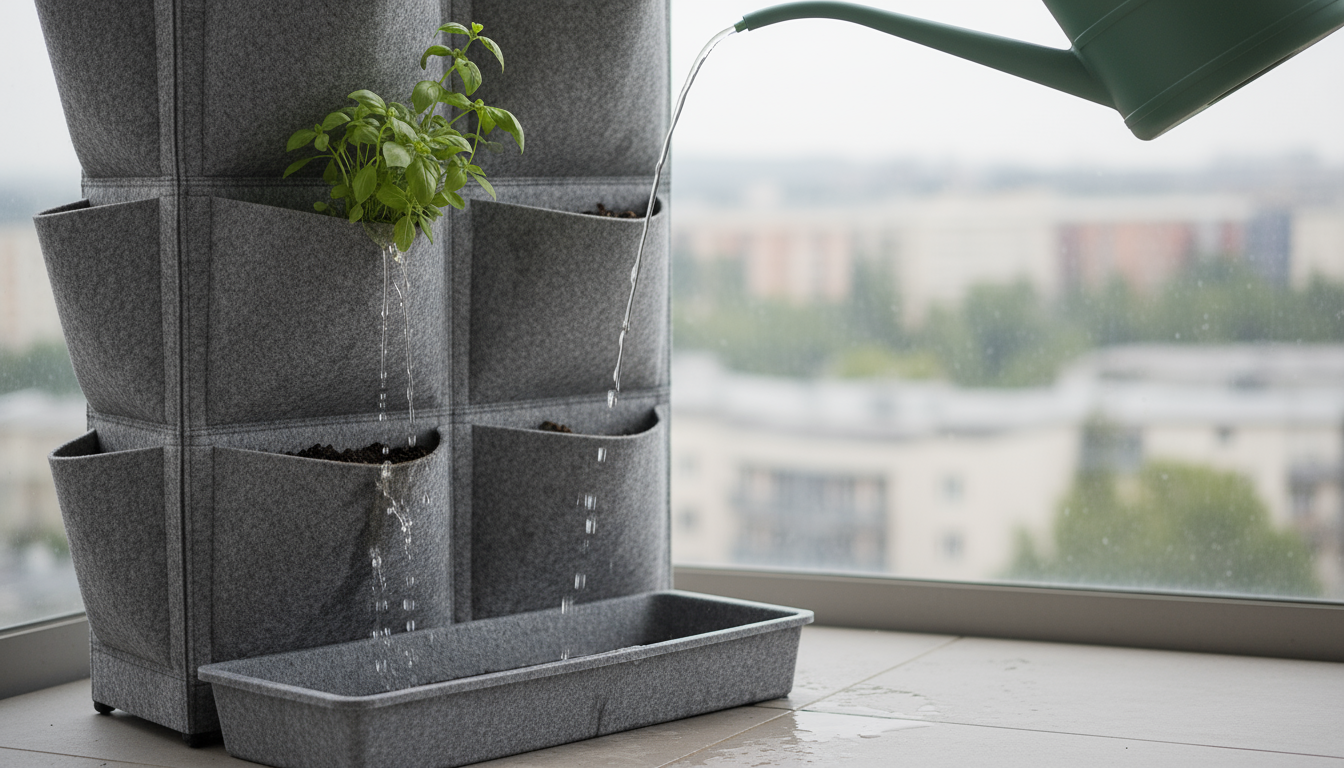
7. Hanging Shoe Organizers
What it is: A standard fabric hanging shoe organizer, typically found in closets, is repurposed by filling its pockets with soil and plants.
Why it’s great for apartments: This is one of the easiest and most affordable DIY vertical garden ideas. Shoe organizers are lightweight, flexible, and can be hung almost anywhere: over a door, on a balcony railing, or against a wall. The individual pockets provide distinct growing spaces, allowing for a variety of plants in a small area. Many are made of durable fabric that offers good drainage.
Actionable tips: Choose a sturdy fabric organizer, ideally one made from breathable material like canvas or felt. If using indoors, ensure you place a waterproof liner inside each pocket or a large drip tray underneath to catch excess water. Outdoors, drainage is less of an issue, but consider how excess water will run off. Fill pockets with a lightweight potting mix. Excellent for growing individual herbs, small succulents, strawberries, or microgreens. Hang in a location that receives adequate sunlight. Water each pocket individually and regularly, as small pockets dry out quickly.

8. Vertical Herb Towers
What it is: These are pre-made, often terracotta or plastic, stackable planters designed to create a tower of herbs or small plants. Each layer typically has openings or pockets for plants to grow out of.
Why it’s great for apartments: Herb towers are compact, freestanding units that maximize vertical space on a balcony, patio, or even indoors near a sunny window. They are designed specifically for small plants and often have a central watering channel that distributes water efficiently to all levels. This makes them relatively low-maintenance and highly productive for growing culinary herbs.
Actionable tips: Choose a tower size appropriate for your space. Assemble the tower according to manufacturer instructions, ensuring it is stable. Use a good quality potting mix. Plant a variety of herbs that have similar sunlight and watering needs. For example, mint, basil, and cilantro might go well together, while rosemary and thyme prefer drier conditions. Place the tower in a location that gets at least 4-6 hours of direct sunlight. Water from the top, allowing it to percolate through all layers. Rotate the tower periodically for even sun exposure if placed against a wall.
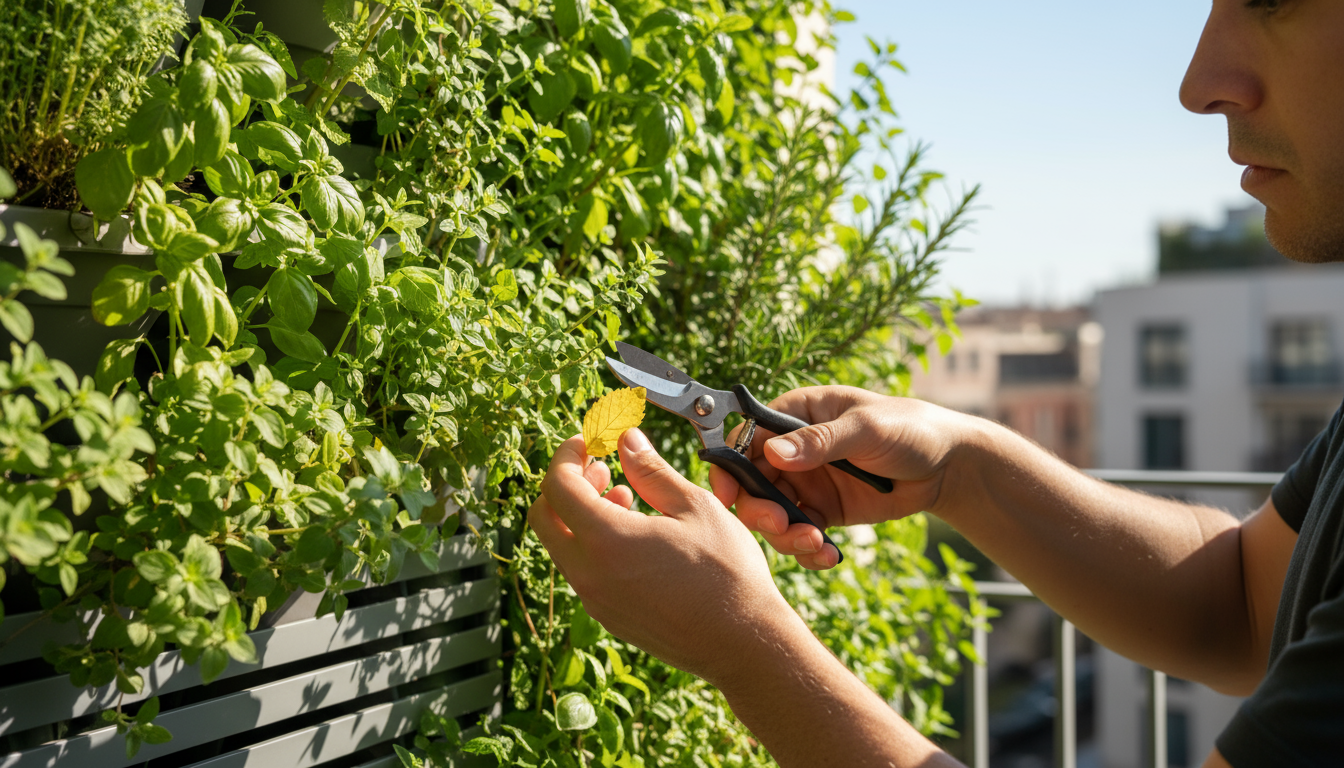
9. Self-Watering Wall Systems
What it is: These are advanced vertical garden kits that often feature a modular design with integrated water reservoirs, wicking mats, or drip irrigation. They minimize the need for daily watering.
Why it’s great for apartments: Self-watering systems are perfect for busy individuals or those who travel frequently. They ensure consistent moisture levels, which is crucial for plant health, especially in smaller containers that dry out fast. Many are sleek and modern, providing a clean aesthetic. While they might be a higher upfront investment, they save time and effort in the long run and reduce water waste.
Actionable tips: Research different self-watering systems to find one that fits your budget and design preferences. Follow installation instructions carefully, paying attention to water reservoir capacity and maintenance. These systems are excellent for a wide range of plants, including leafy greens, herbs, and flowering annuals. Remember to flush the system occasionally to prevent mineral buildup and replenish nutrients through liquid fertilizer. Check the water reservoir level regularly, typically weekly, depending on plant needs and environmental conditions.
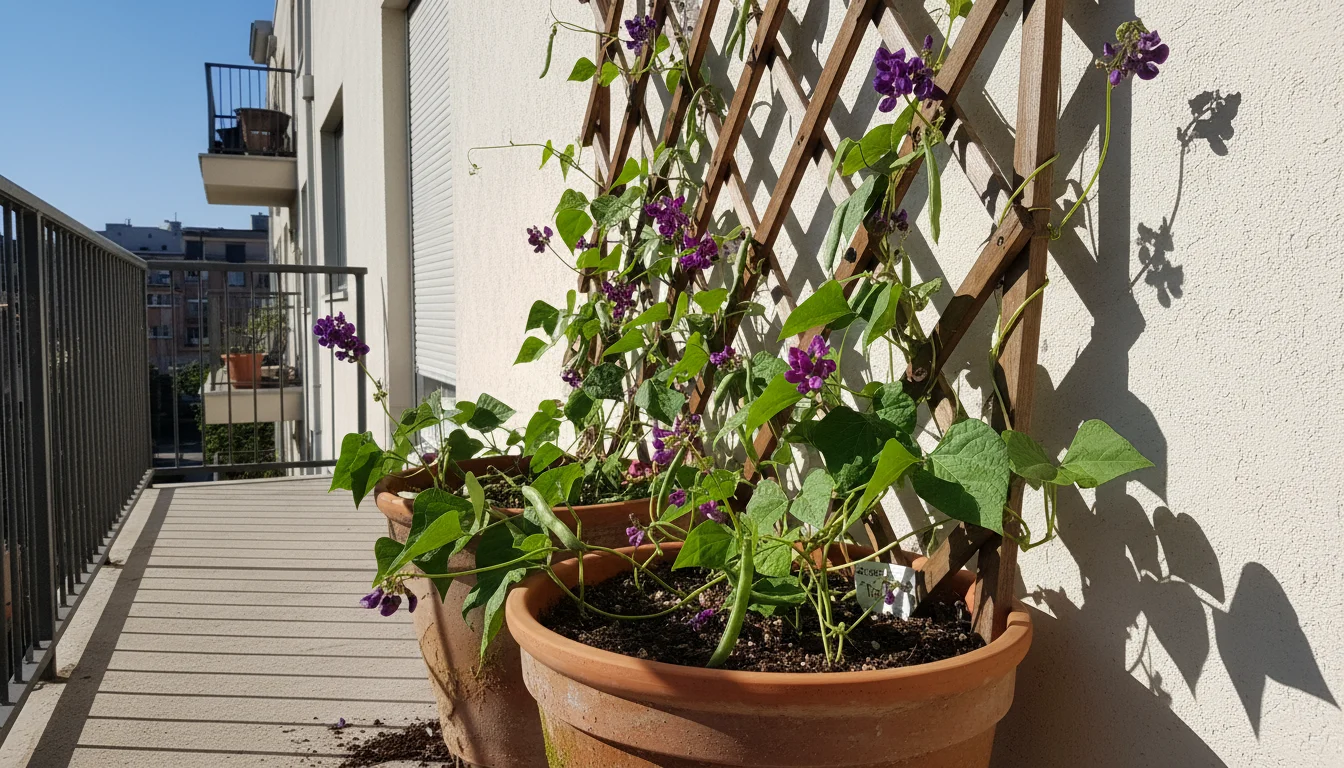
10. Trellis and Climbing Plant Walls
What it is: A simple trellis, mesh, or wire grid mounted to a wall or freestanding, providing support for climbing plants to grow vertically.
Why it’s great for apartments: Trellises are one of the most natural and aesthetically pleasing vertical garden solutions. They take up minimal horizontal space and can transform a plain wall into a living tapestry of foliage and flowers. Many edible plants, like climbing beans, peas, cucumbers, and small squash varieties, thrive on trellises, turning a decorative feature into a productive food source. They are generally inexpensive and easy to install.
Actionable tips: Choose a sturdy trellis material suitable for your plant’s growth habit. Mount the trellis securely to your wall or place it in a large, heavy pot for stability. Plant climbing varieties directly into pots placed at the base of the trellis. Guide young tendrils onto the trellis as they grow. Prune regularly to encourage bushier growth and prevent overgrowth. Consider decorative elements like string lights woven through the trellis for evening ambiance. Excellent for edibles like pole beans, sugar snap peas, cherry tomatoes, and cucumbers, or ornamentals like morning glories, jasmine, or clematis.

11. Picture Frame Planters
What it is: An old picture frame is repurposed into a shallow planter, often filled with succulents or air plants, creating a living wall art piece.
Why it’s great for apartments: These are truly unique and artistic, perfect for small indoor spaces or covered balconies. They act as decorative pieces, adding a touch of nature without taking up much room. They are lightweight, generally easy to create as a DIY project, and require minimal maintenance, especially for succulent or air plant varieties.
Actionable tips: Find a sturdy, deep picture frame. Construct a wooden box or use a shallow container that fits snugly into the frame’s opening. Line the back with a breathable fabric or mesh. Fill with a well-draining succulent potting mix. Arrange succulents (which need very little soil) or air plants (which need no soil) within the frame. You can use chicken wire or mesh over the soil to hold plants in place. Water sparingly. Hang your living picture frame on a wall, ensuring it is level. These are fantastic for a minimalist or artistic aesthetic.

12. Magnetic Planter Walls
What it is: Small planters with magnets on their backs attach to a metal surface, like a refrigerator door, a magnetic board, or a metal backsplash.
Why it’s great for apartments: This is an incredibly flexible and stylish option for truly tiny spaces, especially kitchens. Magnetic planters are easy to move and rearrange, allowing you to change your plant display on a whim. They are perfect for growing small herbs right where you cook, offering both convenience and a fresh, green accent. Installation is instant: just stick them on a magnetic surface.
Actionable tips: Purchase magnetic planters or attach strong magnets to small, lightweight pots. Ensure your chosen magnetic surface can support the weight of the pots, soil, and plants. Fill with a lightweight potting mix. Ideal for frequently used kitchen herbs like basil, chives, thyme, or small succulents. Water carefully to avoid drips, as these are often used indoors. Place them where they receive adequate light, or supplement with a small grow light if your kitchen lacks natural light.
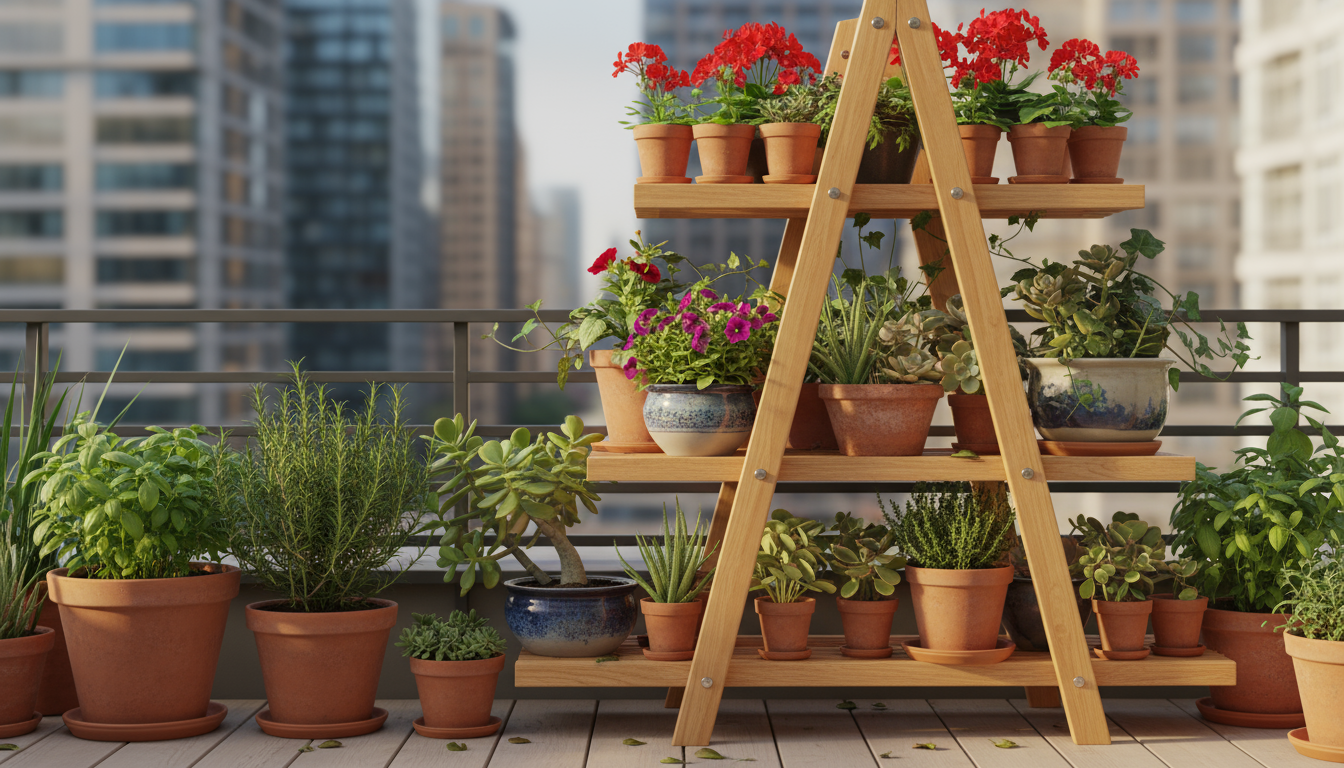
13. Pegboard Gardens
What it is: A standard pegboard panel is mounted to a wall, and various hooks, shelves, and small pots are attached to the pegboard’s holes.
Why it’s great for apartments: Pegboard gardens are incredibly customizable and flexible. You can arrange and rearrange your plants, tools, and decorative elements as often as you like. It’s a functional and aesthetic solution that works well in kitchens, craft areas, or on a covered balcony. It’s relatively inexpensive to set up and offers a modern, organized look.
Actionable tips: Purchase a pegboard panel (wood or metal) and mount it securely to your wall using standoffs to allow air circulation behind it. Use pegboard hooks to hang small pots, baskets, or even shelves. Ensure pots have drainage and use drip trays if indoors. This system is great for a mix of herbs, small leafy greens, air plants, or even small tools. The versatility means you can adapt it as your gardening needs or plant collection changes.
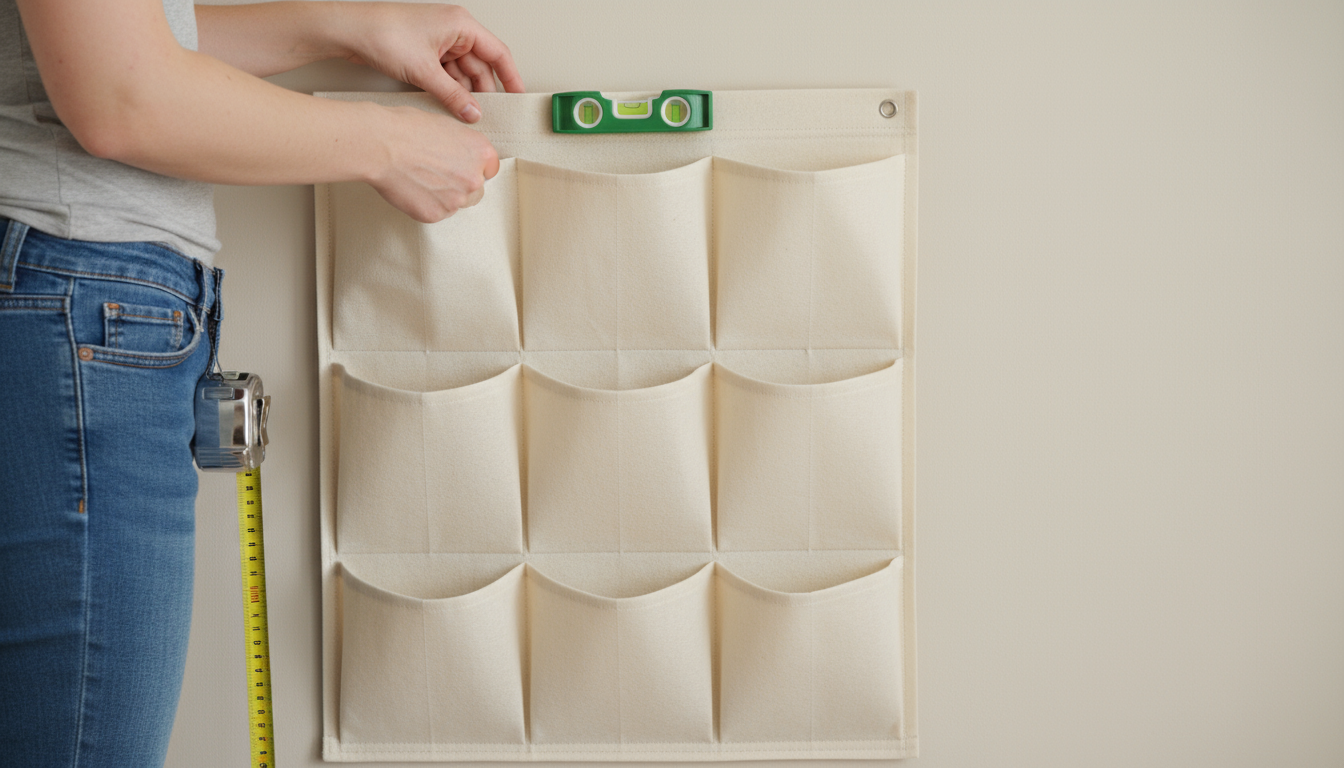
14. Upcycled PVC Pipe Gardens
What it is: PVC pipes are cut, drilled, and configured to create a vertical planter system, often with openings for plants to grow out of the sides.
Why it’s great for apartments: PVC pipe gardens are highly durable, cost-effective if you can source reclaimed pipes, and offer excellent structural integrity. They are fantastic for growing a significant amount of produce in a small space, especially leafy greens or strawberries. The material is weather-resistant and easy to clean, making it suitable for balconies or patios. They can be designed as standalone towers or wall-mounted systems.
Actionable tips: Acquire PVC pipes (food-grade if growing edibles). Cut pipes to desired lengths. Drill large openings along one side for planting, and smaller drainage holes along the bottom. You can cap the bottom of each pipe or create a layered system where water drains from one pipe to the next. Mount securely to a wall or construct a freestanding frame. Fill with a good quality potting mix. Ideal for strawberries, lettuce, spinach, kale, and other shallow-rooted crops. Ensure adequate spacing between planting holes for plant growth and air circulation.
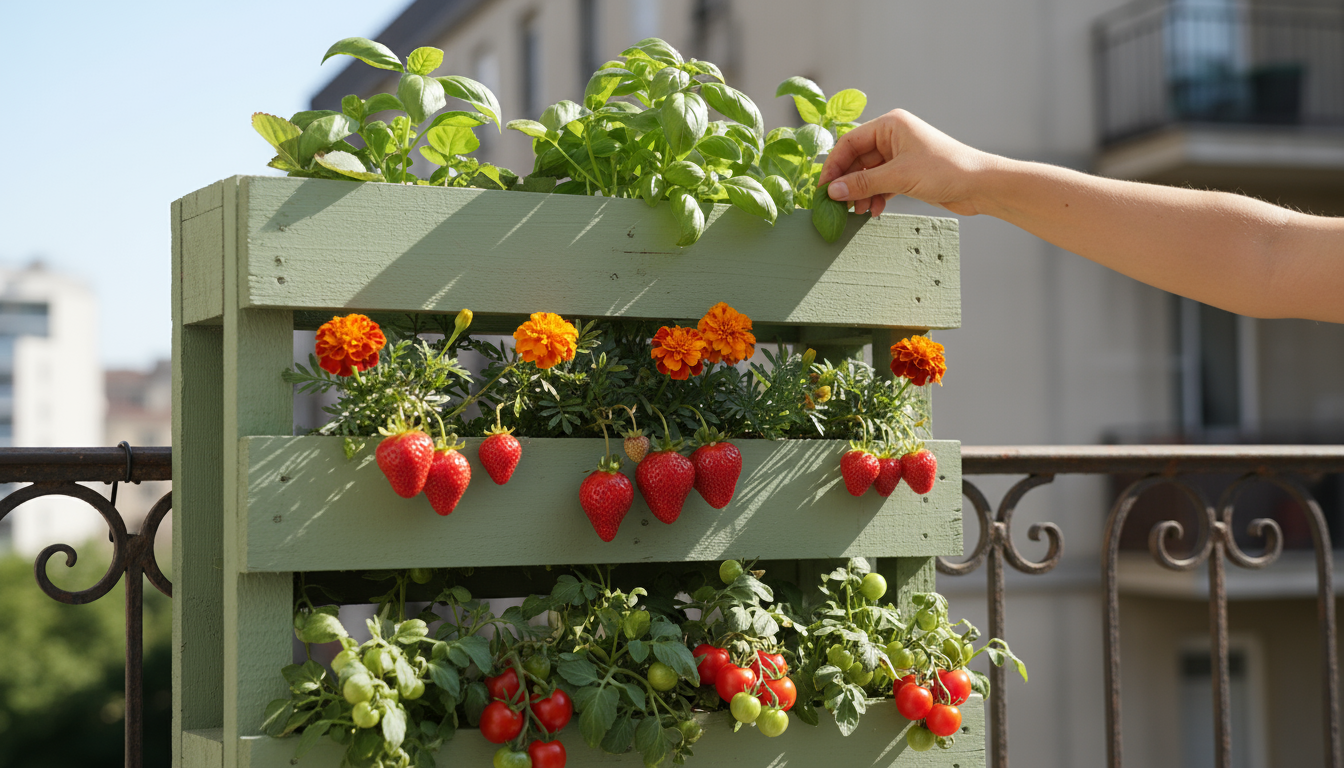
15. Modular Living Walls
What it is: These are professional-grade or advanced DIY systems consisting of interlocking modules or panels that create a continuous green wall. They often include integrated irrigation and drainage.
Why it’s great for apartments: Modular living walls offer the most impressive and visually impactful vertical garden. They are designed for maximum plant density and often come with sophisticated watering systems, making them highly efficient and beautiful. While a larger investment, they transform an entire wall into a vibrant, breathable ecosystem, enhancing aesthetics and potentially increasing property value. Some systems are designed to be relatively easy for a DIY installation.
Actionable tips: Research reputable modular living wall manufacturers. Consider factors like water reservoir capacity, ease of planting, and structural requirements. Plan your plant arrangement carefully for a cohesive look and consider plants with similar light and water needs. These systems can support a wide variety of plants, from ornamental foliage to edible herbs and greens. Regular maintenance, including pruning and occasional nutrient feeding, is essential to keep them looking their best. Ensure proper waterproofing behind the modules if installing indoors or against a building exterior.

Selecting the Right Plants for Your Vertical Space
Choosing the correct plants ensures your vertical garden thrives. Not every plant is suited for vertical living; you need varieties that tolerate confined root spaces, grow well with vertical support, and match your light conditions.
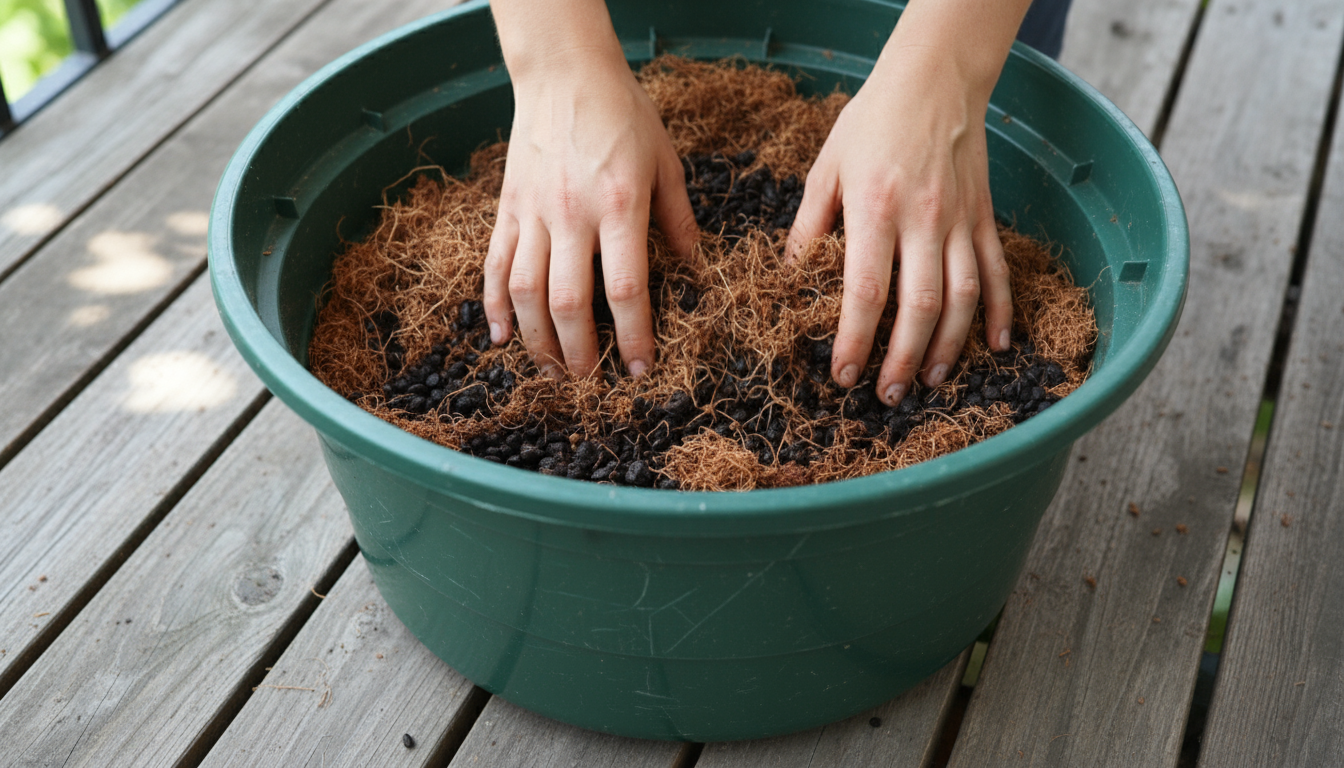
Consider Your Light Conditions First
As discussed earlier, sunlight is paramount. Do not try to force a sun-loving plant into a shady spot, or vice-versa. Observe your vertical garden’s location for a full day before selecting plants.
- Full Sun (6+ hours direct sun): Best for most vegetables, herbs, and flowering plants.
- Partial Sun (3-6 hours direct sun): Suitable for leafy greens, many herbs, and some flowers.
- Shade (less than 3 hours direct sun): Ideal for ferns, mosses, and certain foliage plants.

Plants That Excel in Vertical Gardens
Many plants naturally adapt well to vertical environments. Look for compact varieties, those with shallow root systems, or plants that naturally climb, trail, or sprawl gracefully.
Here is a table of excellent choices for apartment vertical gardens, categorized by their typical sunlight needs:
| Sunlight Needs | Plant Type | Examples | Best Vertical Systems |
|---|---|---|---|
| Full Sun | Herbs | Basil, Rosemary, Thyme, Oregano, Sage, Chives, Lavender | Pocket Planters, Gutter Systems, Herb Towers, Pallet Gardens |
| Vegetables/Fruits | Strawberries, Cherry Tomatoes (compact varieties), Bush Beans, Peas, Cucumbers (bush/trellising varieties), Radishes, Small Peppers | Pallet Gardens, Trellis Systems, PVC Pipes, Stacked Crates, Modular Living Walls | |
| Flowers | Petunias, Nasturtiums, Marigolds, Pansies, Geraniums (dwarf), Lobelia | Pocket Planters, Ladder Shelves, Hanging Shoe Organizers, Gutter Systems | |
| Partial Sun | Herbs | Mint, Cilantro, Parsley, Lemon Balm, Tarragon | Pocket Planters, Gutter Systems, Herb Towers, Magnetic Planters |
| Vegetables/Greens | Lettuce, Spinach, Kale, Arugula, Swiss Chard, Microgreens | Gutter Systems, Pocket Planters, PVC Pipes, Modular Living Walls | |
| Flowers | Impatiens, Fuchsias, Coleus, Begonias, Violas | Pocket Planters, Ladder Shelves, Hanging Shoe Organizers | |
| Shade | Foliage/Ornamentals | Ferns (Maidenhair, Boston), Hostas (dwarf), Heuchera (Coral Bells), Mosses, English Ivy (trailing) | Picture Frame Planters, Modular Living Walls (with shade-tolerant plants), Pocket Planters |
| Succulents/Air Plants | Echeveria, Sedum, Sempervivum, Tillandsia (Air Plants) | Picture Frame Planters, Magnetic Planters, Small Pocket Planters, Pegboard Gardens |
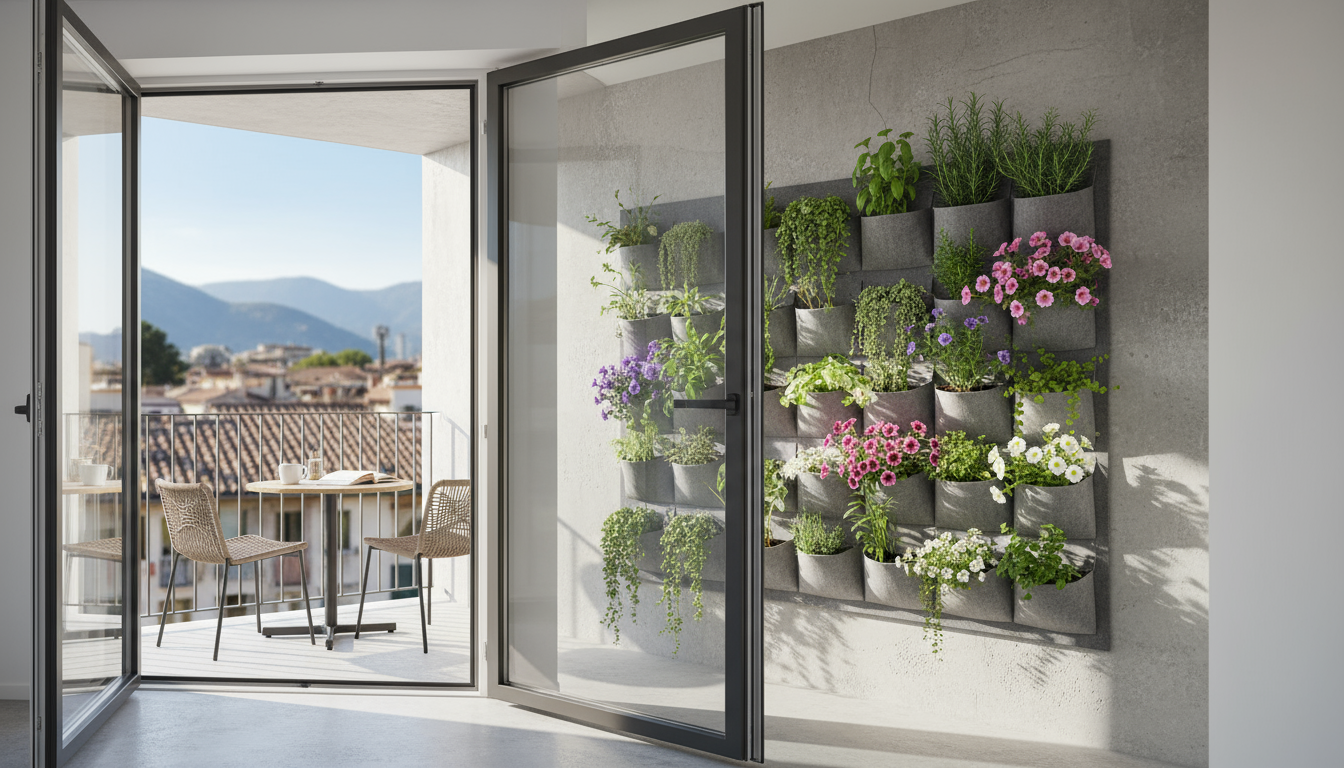
Tips for Plant Selection Success
- Consider Growth Habit: Choose plants labeled “bush,” “dwarf,” or “compact” for smaller systems. For trellises, opt for “vining” or “climbing” varieties. Trailing plants look beautiful cascading from upper pockets.
- Match Water Needs: Group plants with similar watering requirements in the same section or system. For instance, succulents prefer dry conditions, while lettuce needs consistent moisture. Mixing them in one pocket could lead to one plant thriving and the other struggling.
- Root Space: Vertical garden containers generally offer less root space than traditional gardens. Select plants known for shallow roots or those that tolerate restricted root zones well.
- Pest Resistance: Some plant varieties are naturally more resistant to pests and diseases, which can reduce maintenance needs. Research local plant varieties known for their hardiness.
- Start Small: Especially if you are a beginner, begin with a few easy-to-grow plants like herbs (basil, mint) or leafy greens (lettuce, spinach). As you gain confidence, you can expand your plant palette.
By carefully considering your light, space, and the specific needs of your chosen plants, you set your vertical garden up for flourishing success.
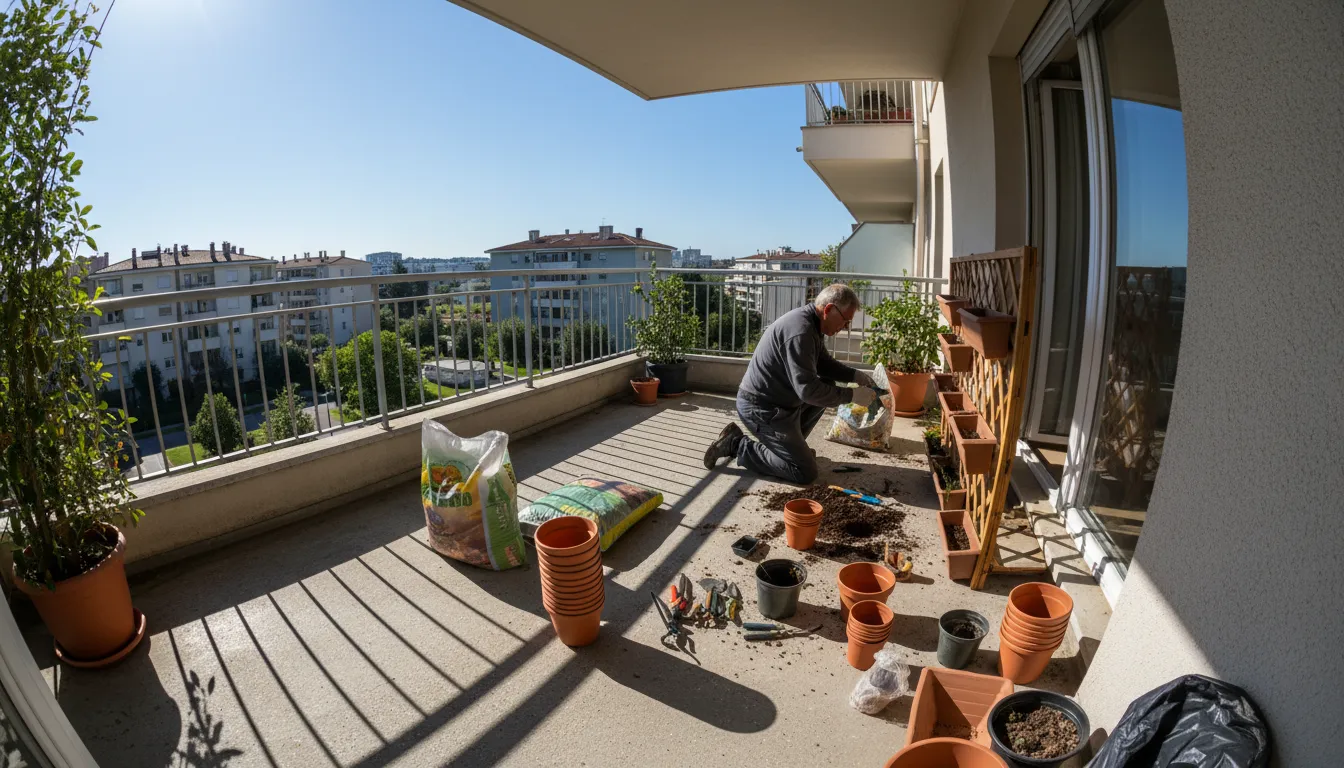
Setting Up Your Vertical Garden: Step-by-Step Guidance
Once you have chosen your vertical garden idea and selected your plants, it’s time to bring your vision to life. This step-by-step guide provides a general framework for setting up most vertical garden systems, focusing on practical advice for apartment living.
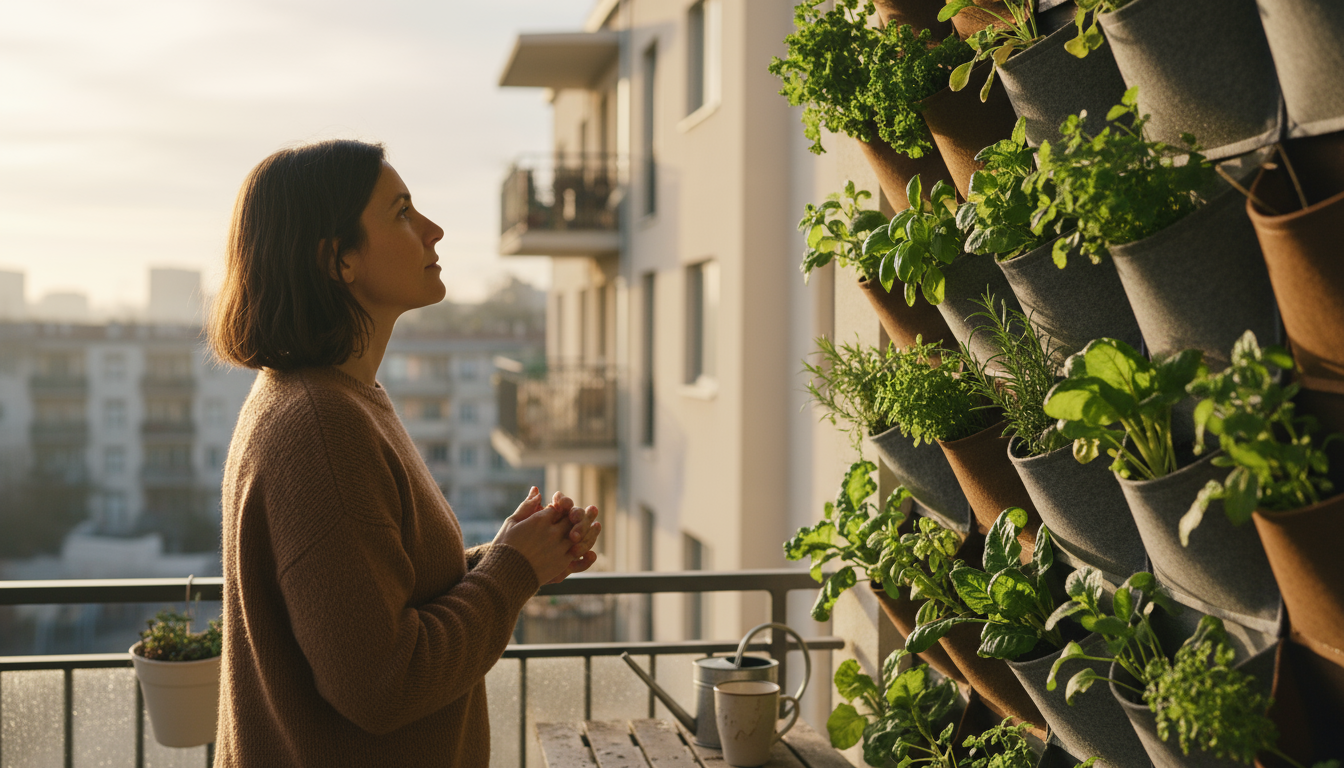
Step 1: Gather Your Materials and Tools
Before you begin, collect everything you need:
- Vertical Garden System: Your chosen kit, repurposed materials, or DIY components.
- Potting Mix: A high-quality, lightweight potting mix is essential. Look for mixes designed for containers, as they offer good drainage and aeration. Avoid heavy garden soil.
- Plants: Your chosen herbs, vegetables, flowers, or succulents.
- Pots/Containers: If your system requires individual pots. Ensure they have drainage holes.
- Drainage Solution: Drip trays, saucers, or a catch basin for runoff, especially important for indoor setups or balconies above other units.
- Tools: Small trowel, gardening gloves, watering can, scissors/pruners, measuring tape, drill (for mounting), level, and appropriate hardware (screws, anchors, hooks).
- Cleaning Supplies: Rags, bucket, broom, for cleanup.
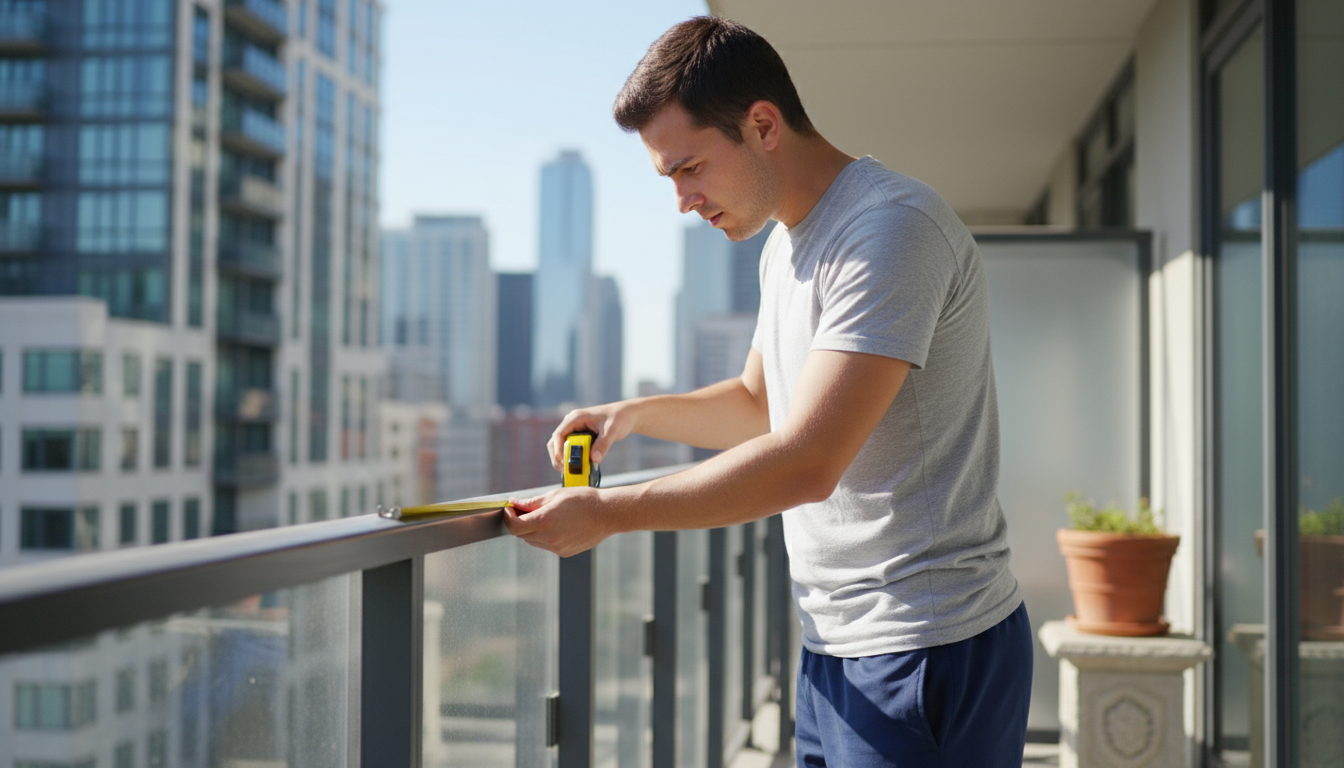
Step 2: Prepare Your Vertical Garden Structure
Follow the specific instructions for your chosen system:
- DIY Projects (e.g., pallets, PVC, gutters):
- Clean all repurposed materials thoroughly.
- Cut, drill, or modify components as needed (e.g., drilling drainage holes in gutters or PVC, lining pallet pockets).
- Assemble the basic structure.
- Kit Systems:
- Unpack all components and verify you have everything.
- Follow the manufacturer’s assembly instructions precisely.
- Consider Stability: For freestanding units, ensure they are stable on their own. For wall-mounted systems, use a stud finder if drilling into drywall, or use appropriate anchors for brick or concrete. If mounting to a railing, ensure the clamps or ties are very secure. A level helps ensure your structure is straight.

Step 3: Add Potting Mix
This step is critical for plant health:
- Choose Lightweight Mix: Vertical gardens already add weight; a lightweight potting mix reduces the overall load. It also provides better aeration, which roots love.
- Fill Appropriately: Fill each pocket, pot, or section with potting mix, leaving about an inch of space from the top. Do not compact the soil too much, as this hinders root growth and drainage.
- Consider Amendments: For some plants, you might want to mix in a slow-release granular fertilizer or some compost to enrich the potting mix, especially if your plants are heavy feeders.
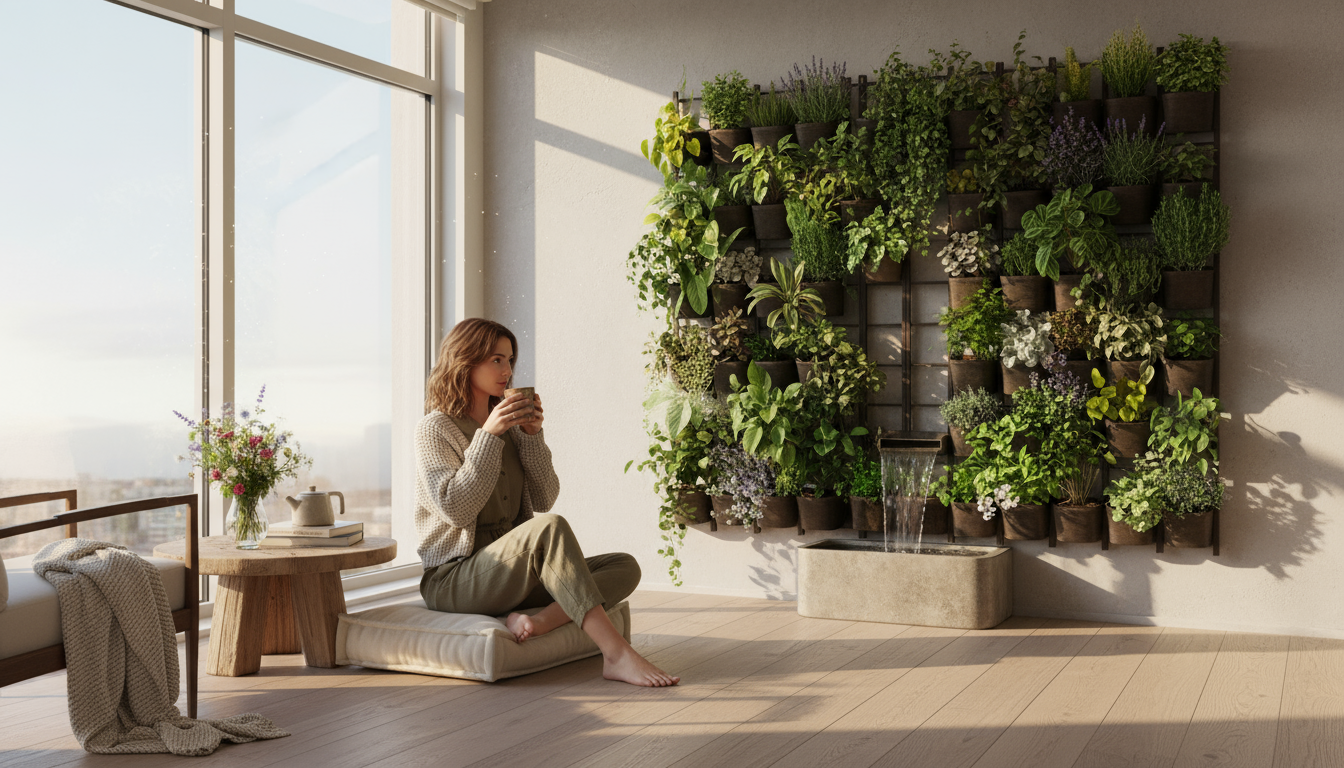
Step 4: Plant Your Chosen Varieties
Carefully transplant your plants into their new vertical homes:
- Gentle Handling: Remove plants from their nursery pots gently. Loosen any tightly bound roots at the bottom.
- Positioning: Place each plant into its designated spot in the vertical system. Ensure the plant’s crown (where the stem meets the roots) is level with the soil surface.
- Fill Gaps: Backfill around the plant with more potting mix, gently patting down to remove large air pockets, but do not compress firmly.
- Spacing: Adhere to recommended spacing for each plant. Overcrowding reduces air circulation and can lead to competition for nutrients and light, weakening your plants.

Step 5: Initial Watering
Watering immediately after planting helps settle the soil and reduce transplant shock:
- Thorough Soak: Water deeply until you see water draining from the bottom of each pocket or pot.
- Monitor Drainage: Observe how the water drains. If it pools for too long, your soil might be too dense, or drainage holes are insufficient. If it rushes through, it might not be absorbing well.
- Catch Runoff: Ensure your drip trays or catch basins are in place to collect any excess water. This prevents mess and potential water damage to your property or your downstairs neighbors’ area.

Step 6: Ongoing Placement and Adjustment
Your vertical garden is now set up, but the work isn’t quite finished:
- Optimal Positioning: Place your vertical garden in its final location, ensuring it receives the appropriate amount of sunlight.
- Observe and Adjust: Over the first few days and weeks, observe your plants closely. Are they perking up? Do they show signs of stress? You might need to adjust watering frequency or even slightly reposition the garden if light conditions are not ideal.
- Secure and Stable: Double-check that all components are secure and stable, especially after watering, which adds significant weight.
By following these steps, you will establish a strong foundation for a thriving vertical garden, bringing green joy and fresh produce right into your apartment.

Essential Care and Maintenance for Thriving Vertical Gardens
A vertical garden, like any garden, requires consistent care to flourish. Regular attention to watering, feeding, pruning, and pest management will ensure your plants remain healthy and productive. Remember, vertical gardens often have different needs than in-ground gardens due to smaller soil volumes and increased exposure to air.

Watering Your Vertical Garden
Vertical gardens typically dry out faster than traditional beds because they have less soil volume and increased air circulation around the containers. This means you will likely need to water more frequently.
- Check Soil Moisture: The best way to determine when to water is to feel the soil. Stick your finger about an inch or two into the potting mix. If it feels dry, it’s time to water. Do not rely solely on a schedule; plant needs vary with temperature, humidity, and plant size.
- Water Thoroughly: When you do water, ensure you soak the soil until water drains from the bottom. This ensures water reaches all the roots.
- Avoid Overwatering: While frequent watering is often necessary, overwatering can still lead to root rot. Good drainage is key. Do not let pots sit in standing water.
- Morning is Best: Water in the morning when possible. This allows plants to absorb water before the heat of the day and gives foliage time to dry, reducing the risk of fungal diseases.
- Consider Drip Systems: For larger vertical gardens or if you travel frequently, a simple drip irrigation system or self-watering reservoir can automate watering and ensure consistency.
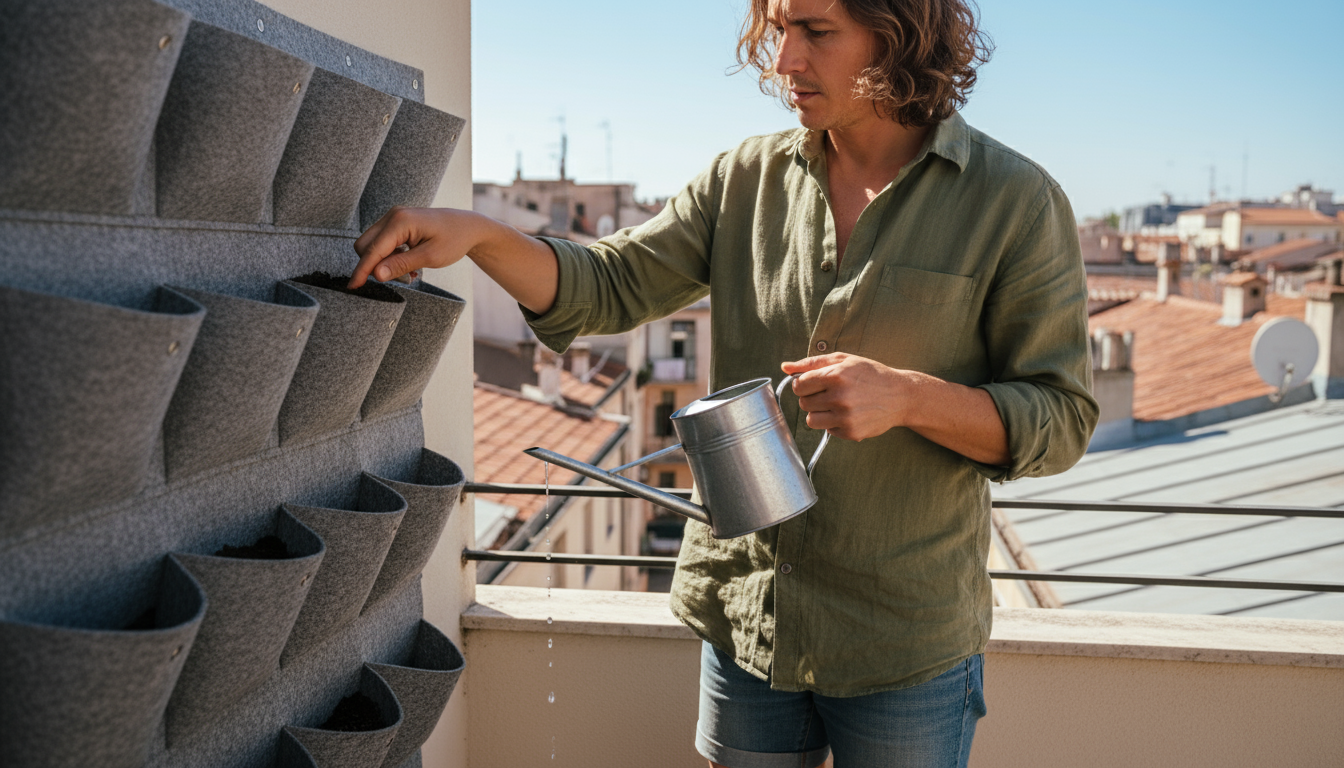
Fertilizing for Nutrient Boost
With limited soil volume, vertical garden plants quickly deplete nutrients. Regular feeding is essential for vigorous growth.
- Liquid Fertilizers: These are often easiest for vertical gardens. Apply a balanced liquid fertilizer (e.g., 5-5-5 or 10-10-10) every 2-4 weeks during the growing season, following product instructions carefully.
- Slow-Release Granules: You can mix slow-release granular fertilizer into the potting mix when planting. These release nutrients gradually over several months, reducing the need for frequent liquid feeding.
- Compost Tea: An organic option, compost tea provides a gentle nutrient boost and beneficial microbes.
- Observe Your Plants: Yellowing leaves can indicate a nutrient deficiency. Adjust your feeding schedule if your plants show signs of hunger.
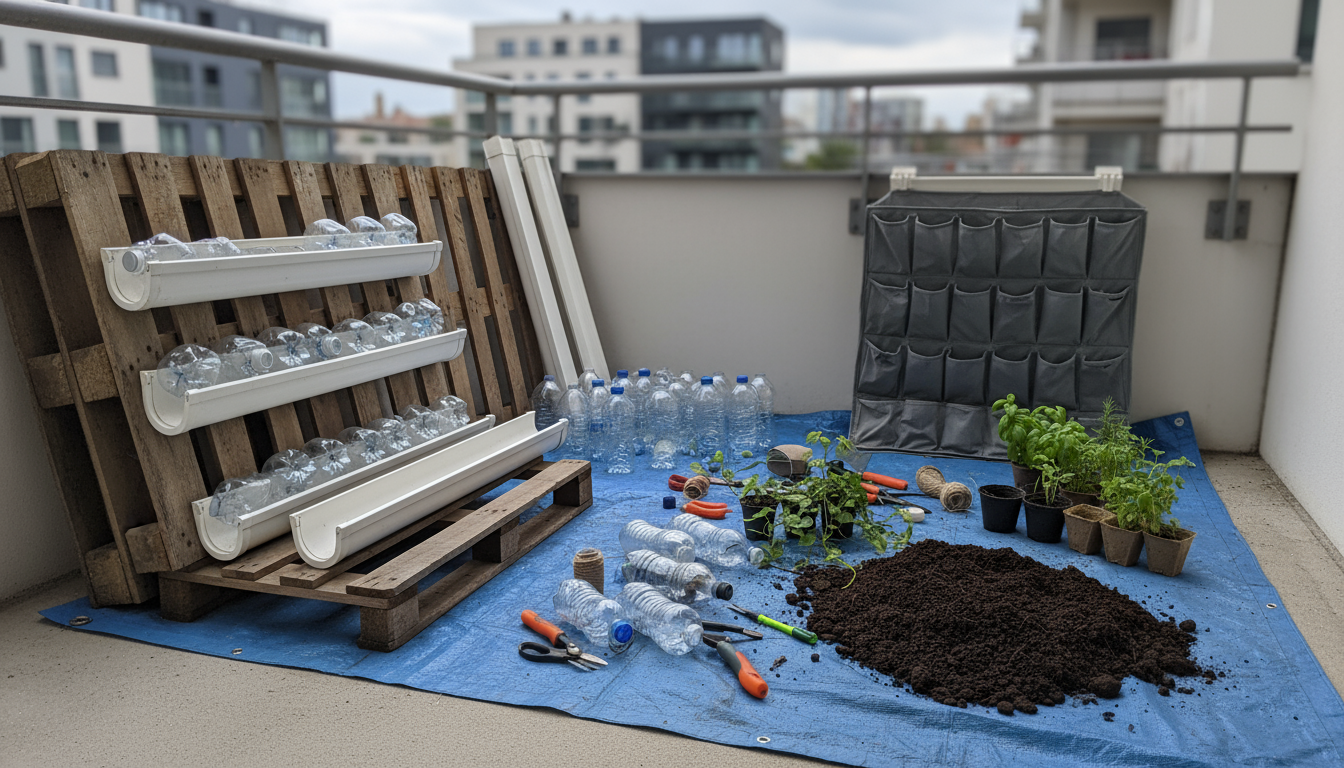
Pruning and Training
Regular pruning keeps plants healthy, encourages new growth, and maintains the aesthetic appeal of your vertical garden.
- Remove Dead or Diseased Parts: Promptly snip off any yellow, brown, or diseased leaves and stems to prevent the spread of issues.
- Pinch Back for Bushiness: For many herbs and flowering plants, pinching off the growing tips encourages them to branch out, resulting in a fuller, bushier plant. This is particularly important for plants that tend to get leggy in vertical setups.
- Harvest Regularly: For edible plants, consistent harvesting encourages more production. Do not let herbs or greens bolt (go to seed) unless you intend to collect seeds.
- Train Climbers: For plants on a trellis, gently guide new growth onto the support structure. Secure with soft ties if needed, but avoid tying too tightly, which can damage stems.

Pest and Disease Management
Even in a vertical garden, pests and diseases can appear. Early detection is key.
- Regular Inspection: Spend a few minutes each week inspecting your plants, checking the undersides of leaves for tiny insects like aphids, spider mites, or whiteflies. Look for unusual spots, discoloration, or distorted growth.
- Good Air Circulation: Ensure plants are not too crowded, as good air circulation helps prevent fungal diseases. Pruning also contributes to this.
- Natural Pest Control: For minor infestations, a strong spray of water can dislodge many pests. Insecticidal soap or neem oil are effective organic treatments for common pests. Apply in the early morning or evening.
- Quarantine New Plants: If introducing new plants to your vertical garden, keep them separate for a week or two to ensure they are pest and disease-free before integrating them.

Seasonal Adjustments
Your vertical garden’s needs may change with the seasons.
- Summer: Expect higher watering frequency due to heat and sun. Consider partial shade for sensitive plants if temperatures soar.
- Winter: For outdoor vertical gardens in colder climates, bring sensitive plants indoors or protect them from frost. Reduce watering as plants grow slower. If plants go dormant, consider rotating them out for a fresh planting in spring.
- Rotate Plants: If some plants receive more sun than others, rotate your containers or entire vertical garden (if movable) to ensure even exposure.
By integrating these care practices into your routine, you will cultivate a vibrant, healthy, and productive vertical garden that enhances your apartment living space for years to come.
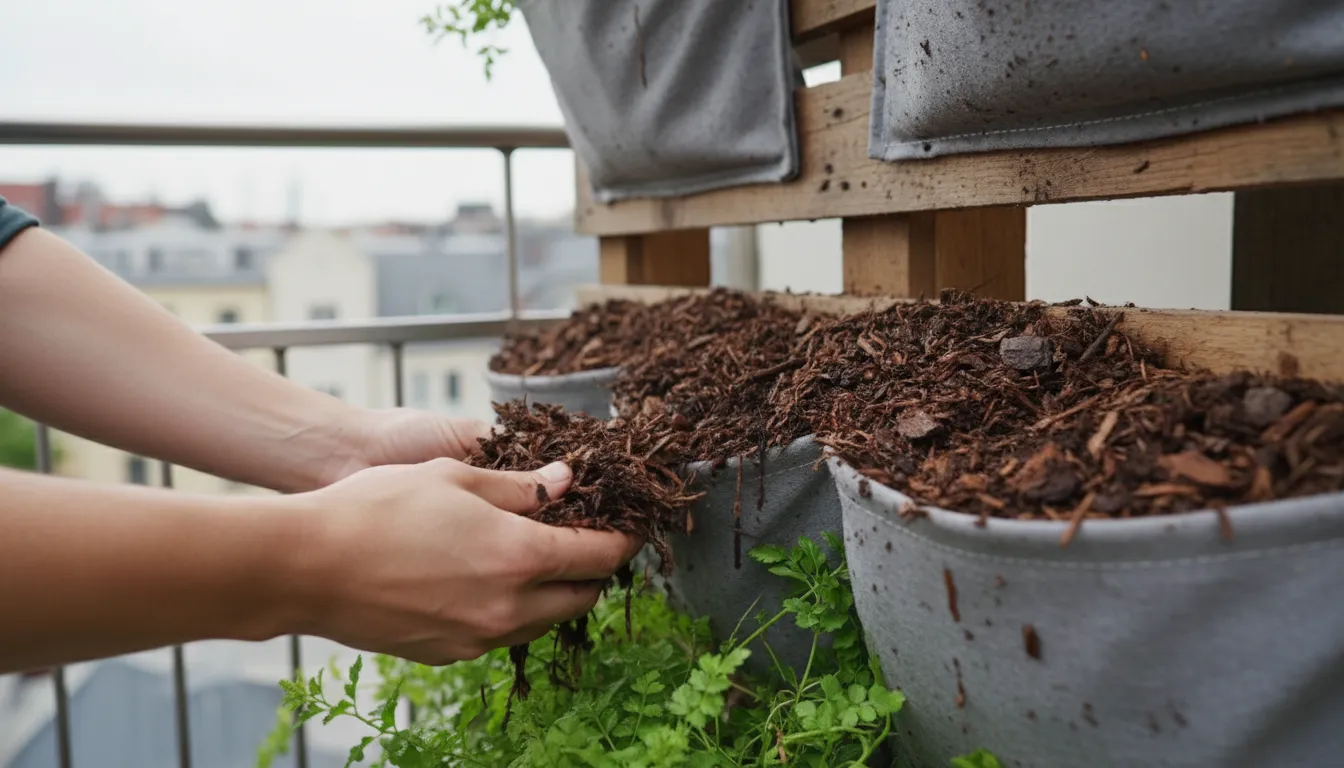
Troubleshooting Common Vertical Garden Challenges
Even with careful planning, gardeners encounter issues. Understanding common problems and how to address them helps you quickly resolve setbacks and keep your vertical garden thriving. Here are some frequent challenges and their practical solutions.
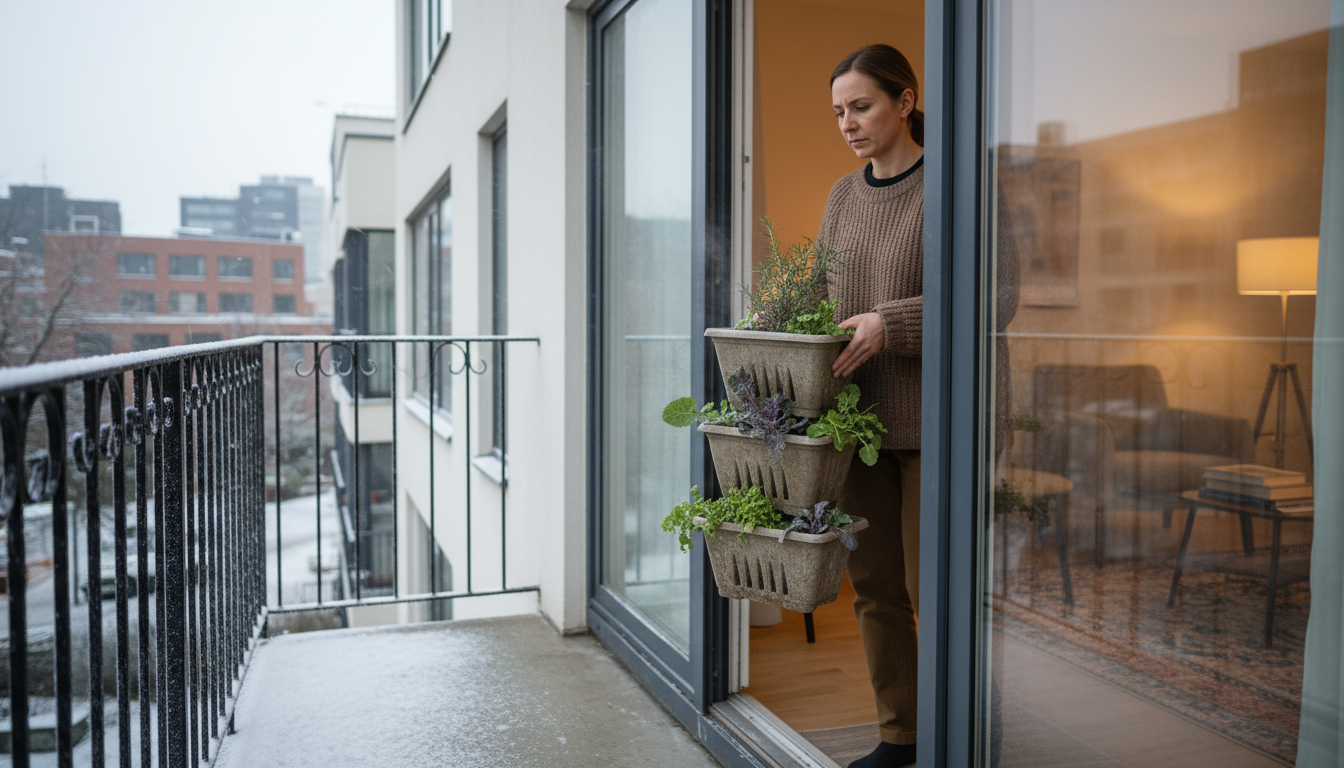
Challenge 1: Plants Drying Out Too Quickly
Cause: Smaller soil volume in vertical containers, increased exposure to air, strong sun, or insufficient watering.
Solution:
- Increase Watering Frequency: Check soil moisture daily, especially during hot or windy weather, and water more often.
- Amend Potting Mix: Mix in water-retentive materials like coco coir or vermiculite to help the soil hold moisture longer.
- Mulch: Apply a thin layer of shredded bark, coco coir, or pebbles on top of the soil in each pocket or pot to reduce evaporation.
- Consider a Self-Watering System: Upgrade to a system with reservoirs or install a drip irrigation setup for more consistent moisture.
- Provide Shade: For sun-sensitive plants, offer temporary shade during the hottest part of the day, or relocate to a shadier spot if possible.

Challenge 2: Overwatering and Root Rot
Cause: Poor drainage, too frequent watering in cool or humid conditions, or heavy, compacted soil.
Solution:
- Ensure Adequate Drainage: Verify all containers have drainage holes. If not, drill them. Ensure water can freely exit the system and is collected in a tray, not standing around roots.
- Use Lightweight Potting Mix: Avoid dense garden soil. Use a specialized potting mix designed for containers that offers excellent drainage.
- Check Soil Moisture Before Watering: Always feel the soil before watering. Only water when the top inch or two feels dry.
- Improve Air Circulation: Space plants appropriately. Prune dense foliage to allow better airflow, which helps dry out soil surface.
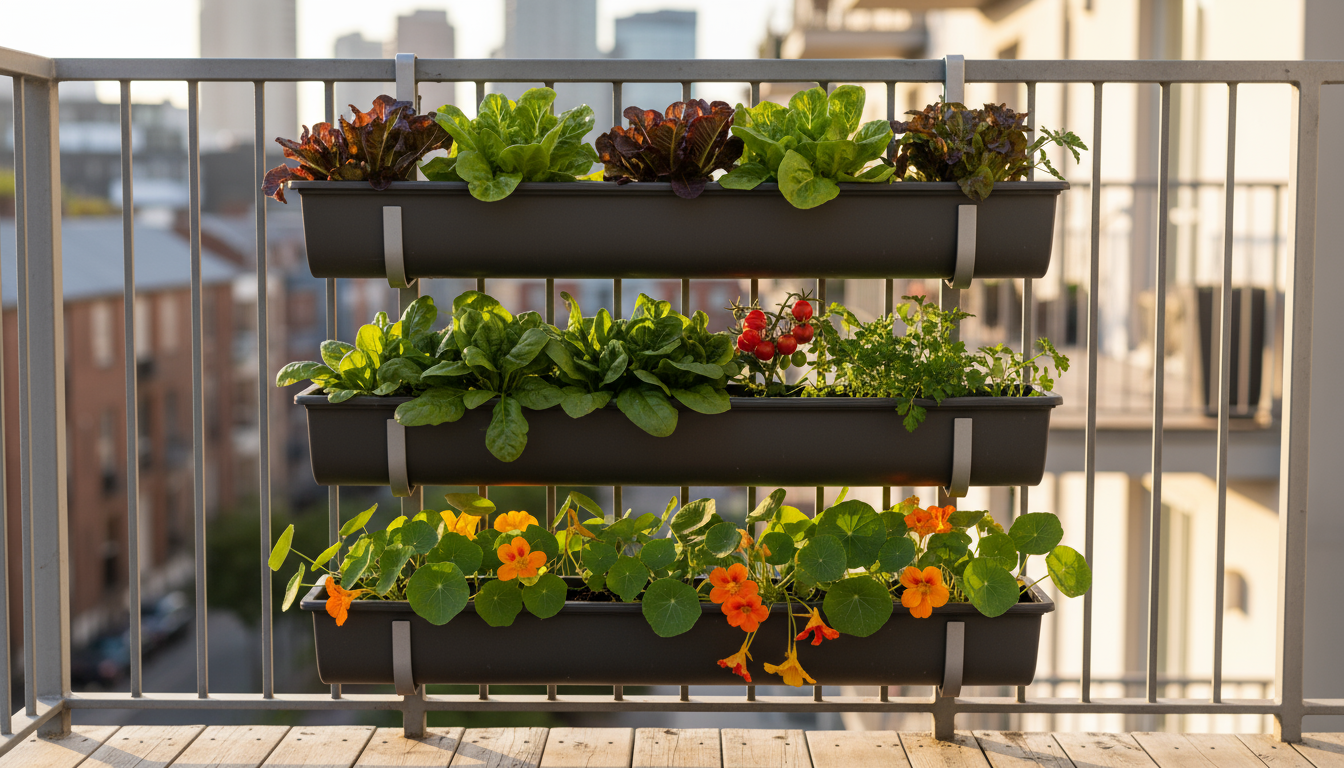
Challenge 3: Leggy or Stunted Growth
Cause: Insufficient light, lack of nutrients, or overcrowding.
Solution:
- Increase Light Exposure: Move your vertical garden to a sunnier location. If indoors, supplement with a full-spectrum grow light. Rotate your garden regularly for even light distribution.
- Fertilize Regularly: Vertical gardens deplete nutrients quickly. Implement a consistent feeding schedule with a balanced liquid fertilizer.
- Thin Out Plants: Remove weaker seedlings or prune back overcrowded plants to give remaining plants more room, light, and nutrients.
- Choose Appropriate Plants: Ensure your plant choices are suitable for the available light and container size.
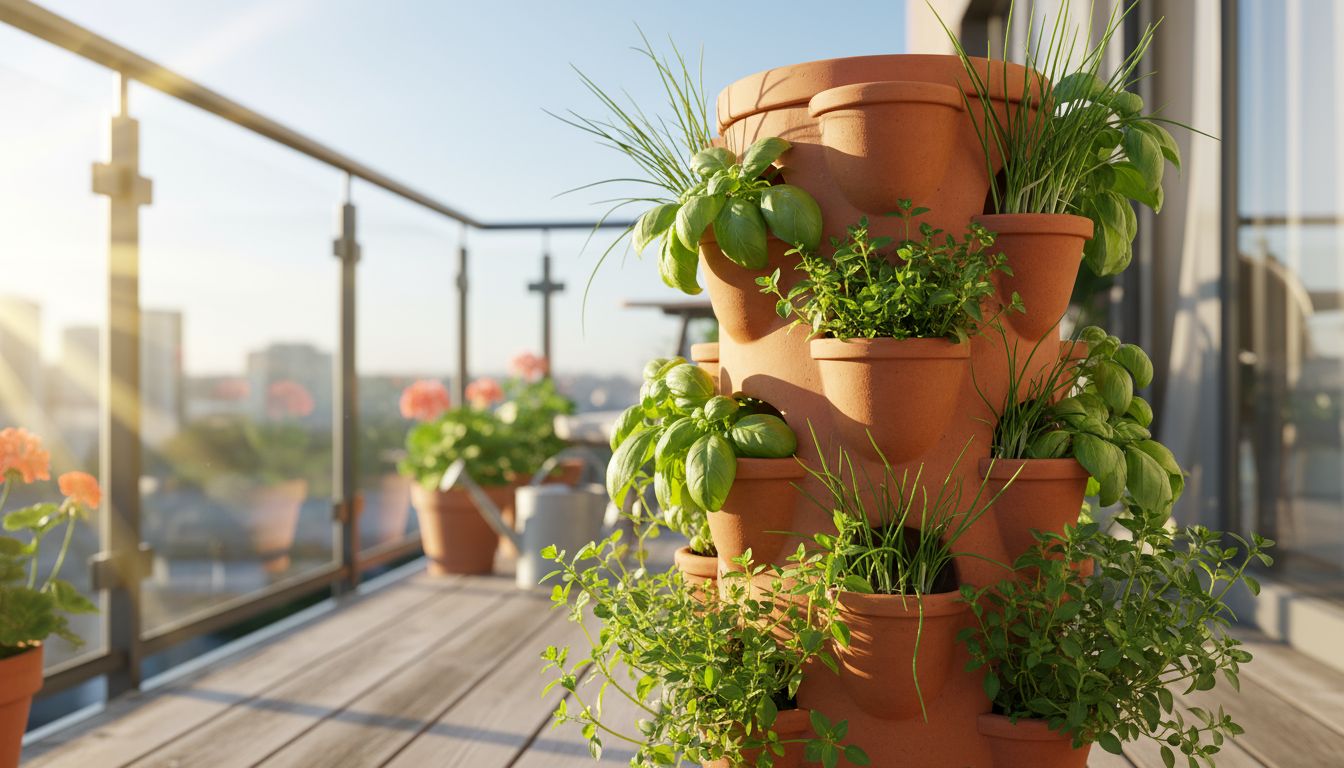
Challenge 4: Pests and Diseases
Cause: Introduction of infected plants, poor air circulation, or environmental stress weakening plants.
Solution:
- Inspect Regularly: Catch issues early. Check undersides of leaves for pests.
- Isolate New Plants: Keep new plants separate for a week or two before adding them to your main garden.
- Use Organic Pest Control: For aphids, spider mites, or whiteflies, spray with insecticidal soap or neem oil. A strong jet of water can also dislodge many pests.
- Improve Airflow: Prune dense foliage to increase air circulation, deterring fungal diseases like powdery mildew.
- Sanitize Tools: Clean pruning shears and other tools regularly to prevent spreading diseases between plants.

Challenge 5: Algae Growth on Surfaces/Pipes
Cause: Constant moisture, sunlight on moist surfaces, or stagnant water in reservoirs.
Solution:
- Clean Regularly: Wipe down exposed surfaces, especially pipes or reservoirs, regularly to remove algae buildup.
- Paint Opaque: If using clear PVC pipes or bottles, paint the exterior with an opaque, non-toxic paint to block sunlight and inhibit algae growth.
- Improve Drainage/Circulation: Ensure water is not pooling unnecessarily. For self-watering systems, ensure proper water circulation.
- Introduce Beneficial Bacteria: In larger hydroponic vertical systems, certain beneficial bacteria can help control algae.
By proactively addressing these common challenges, you can prevent minor issues from becoming major problems, ensuring your vertical garden remains a vibrant and low-maintenance feature in your apartment.
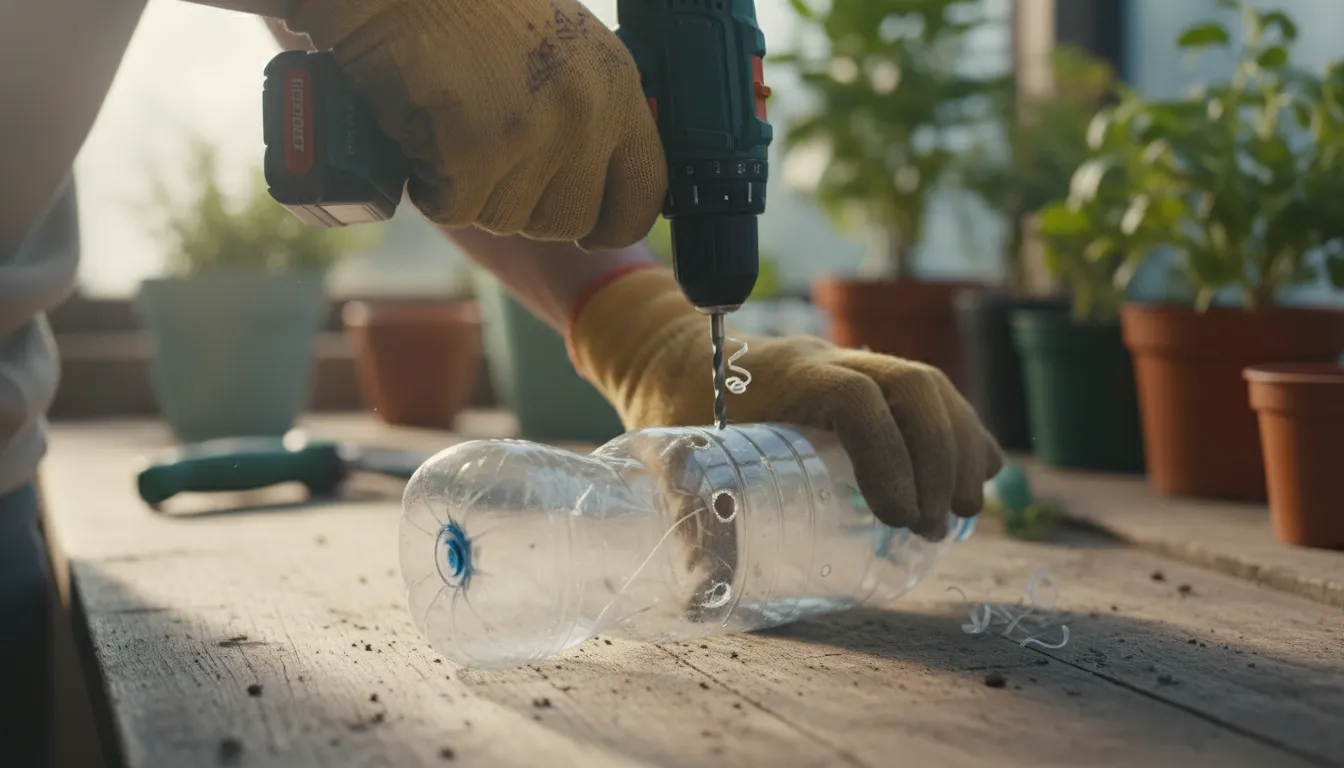
Eco-Friendly Vertical Gardening: Sustainable Practices
At SimpleGardenJoy.com, we believe gardening should be both rewarding and responsible. Vertical gardening naturally lends itself to sustainable practices, allowing you to minimize your environmental footprint even in a small apartment. By making conscious choices, you can create a green space that benefits both you and the planet.

Repurpose and Upcycle Materials
One of the most impactful ways to garden sustainably is to give new life to old items. Many vertical garden ideas are perfect for repurposing:
- Plastic Bottles: Transform discarded soda or water bottles into individual planters, often incorporating self-watering wicks. This diverts plastic from landfills.
- Wooden Pallets: Salvaged pallets can be cleaned and reconfigured into sturdy tiered gardens. Always ensure they are heat-treated (HT) and not chemically treated (MB).
- Rain Gutters: Old rain gutters or remnants from construction projects can become linear planting beds.
- Old Furniture: Repurpose old dressers, shelves, or even shoe organizers into unique vertical planters.
- Coffee Cans or Food Tins: Cleaned and decorated cans make excellent small containers for herbs or succulents. Remember to drill drainage holes.
By choosing repurposed materials, you reduce waste, conserve resources, and often save money, aligning perfectly with an eco-conscious ethos.
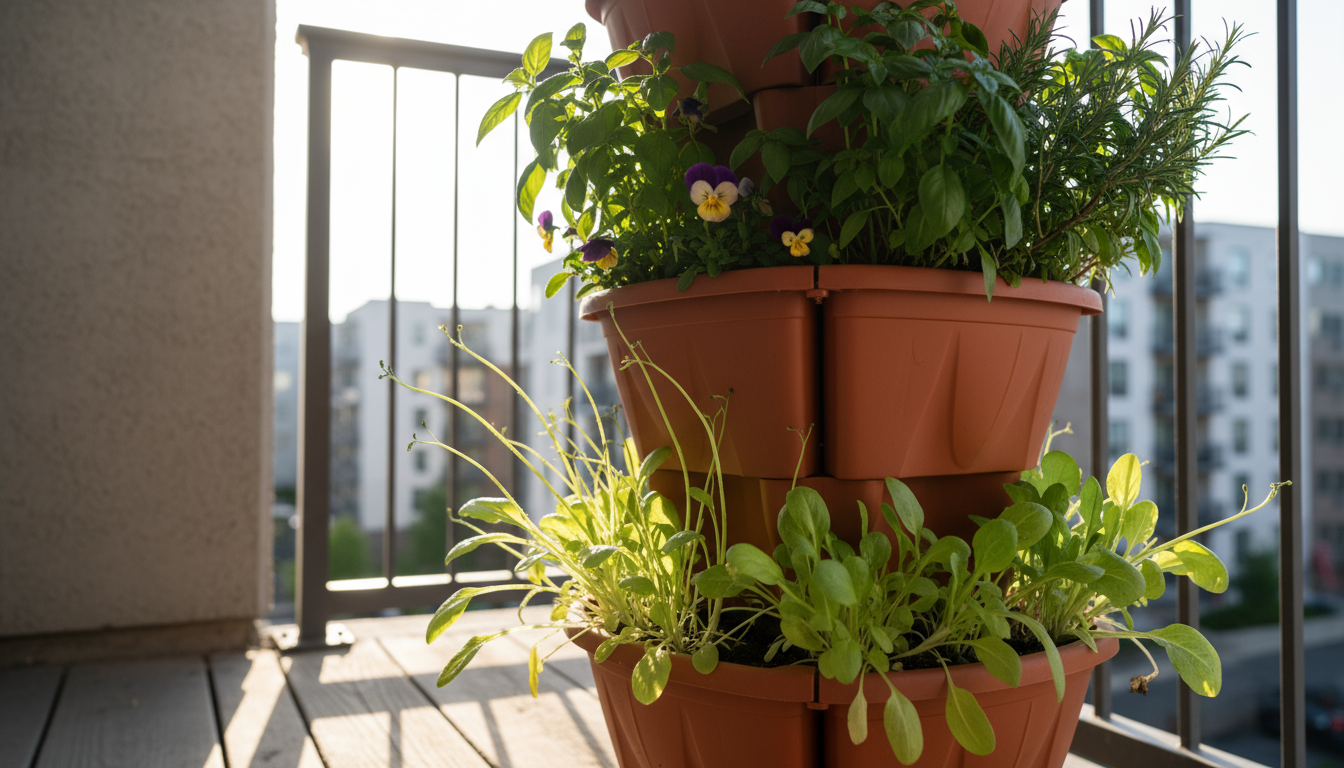
Conserve Water Smartly
Water is a precious resource, and efficient watering practices are vital for any garden, especially in vertical setups where containers can dry out quickly.
- Drip Irrigation or Self-Watering Systems: These methods deliver water directly to the plant roots, minimizing evaporation and runoff. They can reduce water usage by up to 50% compared to overhead watering.
- Mulch: Apply a layer of organic mulch (like coco coir, wood chips, or pebbles) to the top of your soil. This insulates the soil, reduces water evaporation, and keeps roots cooler.
- Collect Rainwater: If you have a balcony, consider a small rain barrel or container to collect rainwater. This chemical-free water is excellent for plants and reduces your reliance on tap water.
- Water in the Morning: Watering early in the day allows water to soak in before the sun evaporates it, and gives foliage time to dry, reducing disease risk.
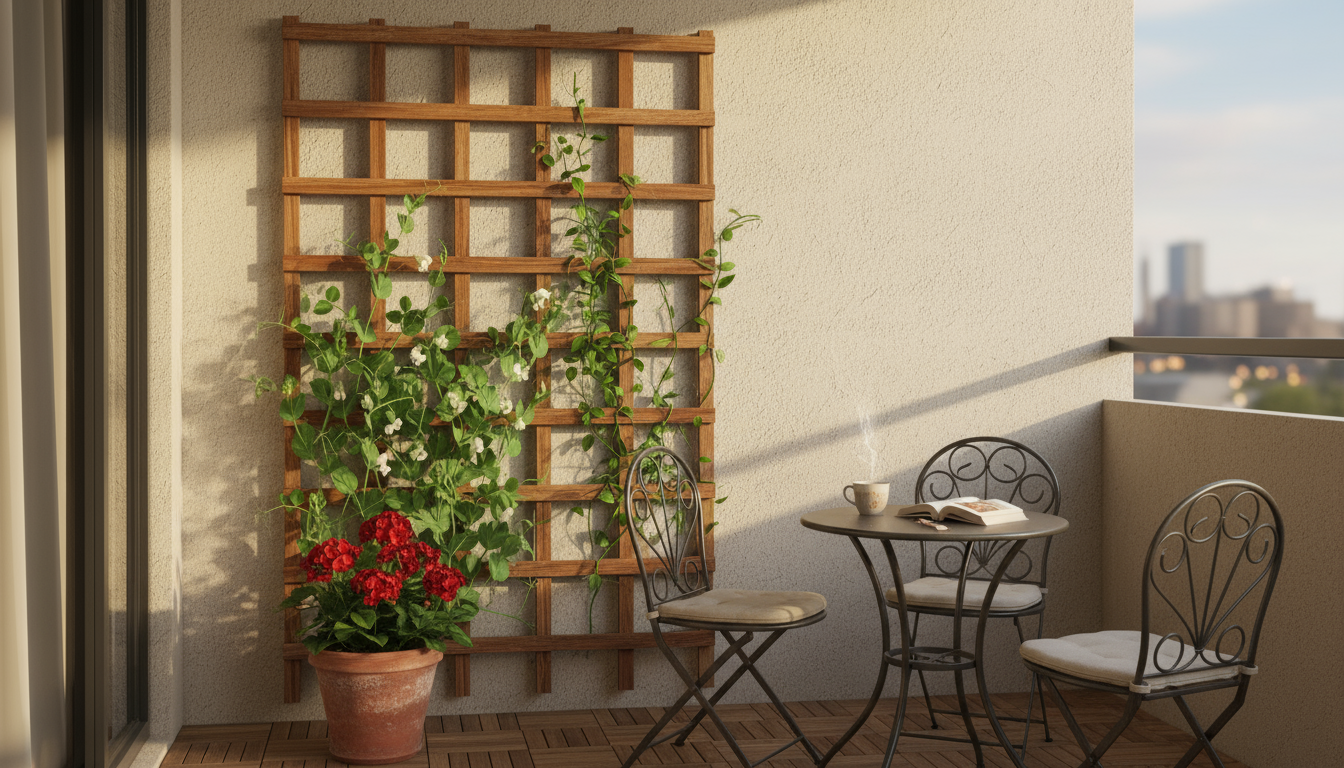
Choose Sustainable Potting Mixes
The foundation of your vertical garden is the soil. Make environmentally friendly choices for your potting mix:
- Peat-Free Mixes: Peat harvesting damages peat bogs, which are vital ecosystems and carbon sinks. Opt for peat-free potting mixes that use alternatives like coco coir, compost, or rice hulls.
- Compost: Incorporate your own homemade compost (if space allows) or purchased organic compost. It enriches the soil, improves water retention, and provides a slow release of nutrients, reducing the need for synthetic fertilizers.
- Vermicompost (Worm Castings): These are nutrient-rich and excellent for boosting plant health naturally.
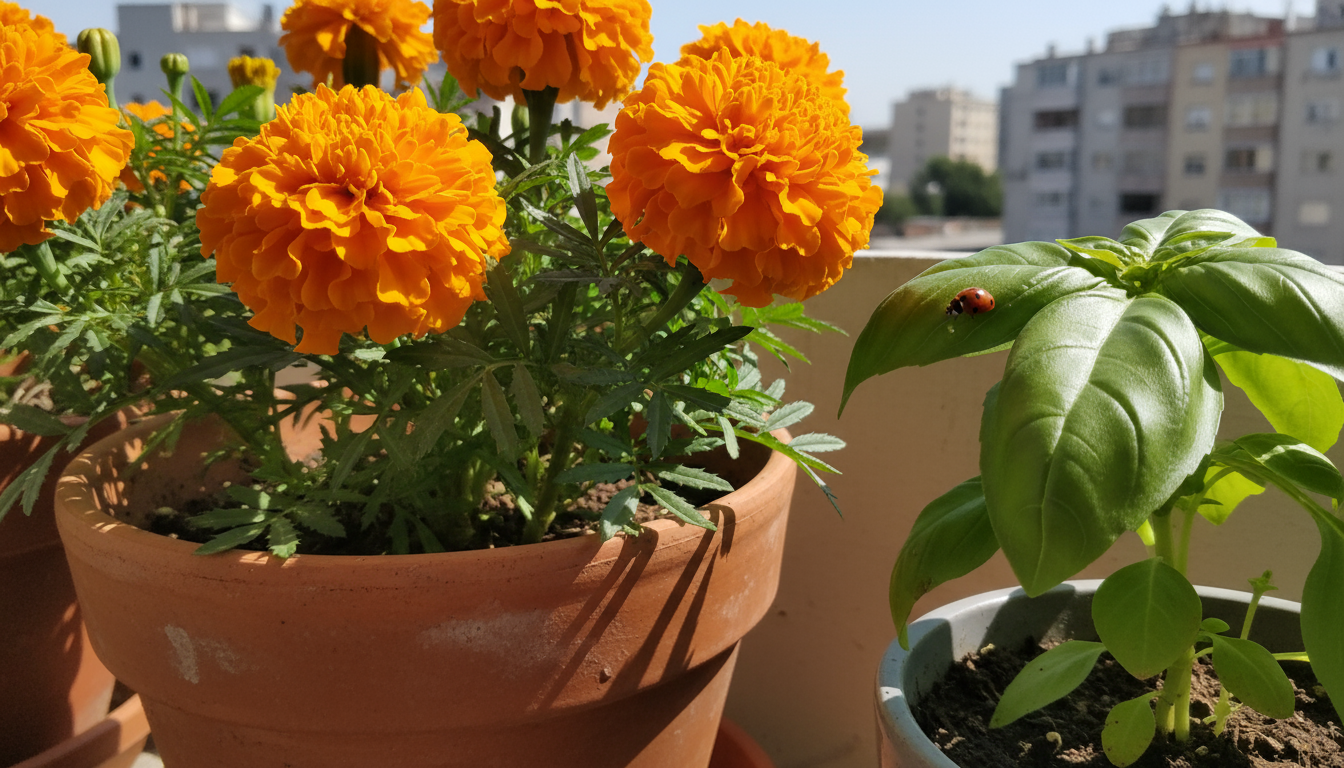
Practice Integrated Pest Management (IPM)
IPM focuses on prevention and non-chemical solutions to control pests, protecting your plants and the environment.
- Beneficial Insects: Encourage natural predators like ladybugs by planting companion flowers.
- Hand-Picking: For larger pests, simply remove them by hand.
- Organic Sprays: Use insecticidal soap, neem oil, or homemade garlic/chili sprays as a last resort for stubborn infestations. These break down quickly and do not harm beneficial insects or the environment like synthetic pesticides.
- Companion Planting: Some plants deter pests naturally. Marigolds, for example, can deter nematodes and other harmful insects.
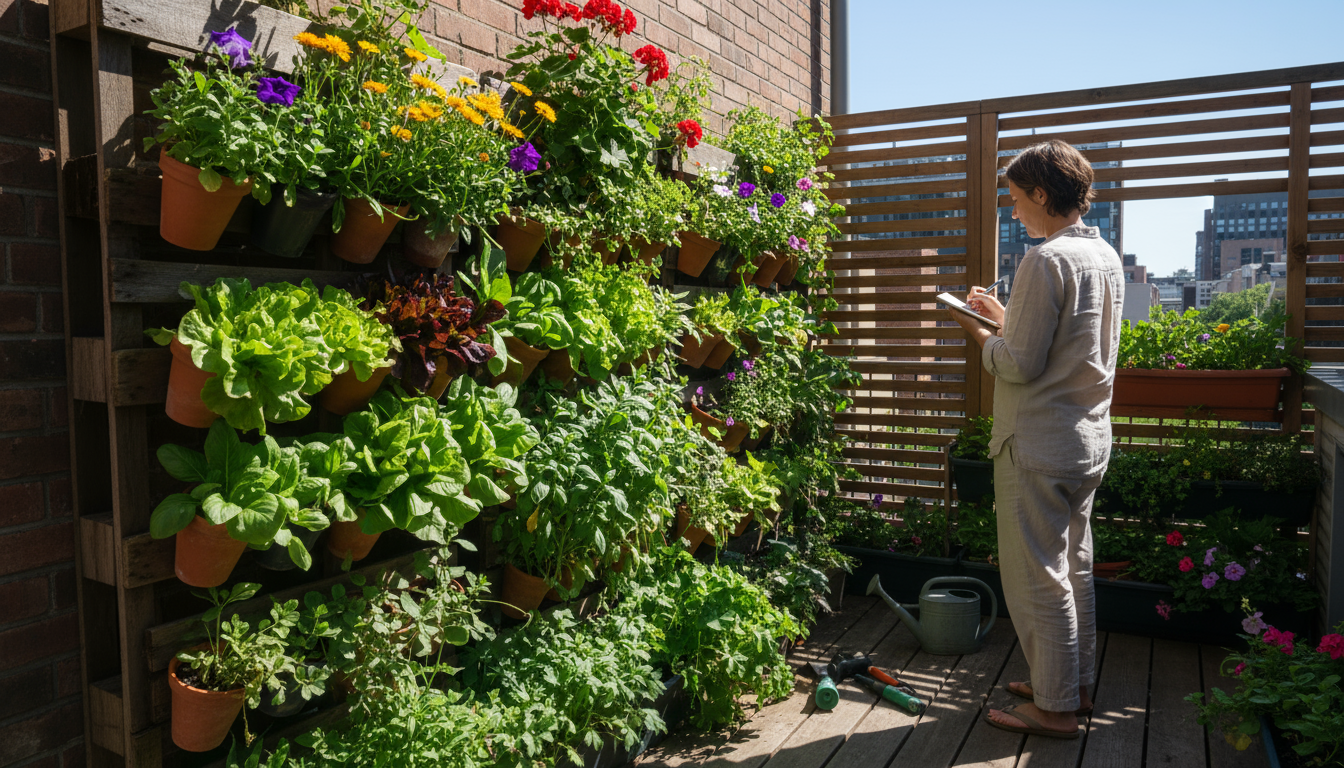
Grow Organically
Commit to avoiding synthetic chemical pesticides and fertilizers. Organic gardening methods nurture the soil, support beneficial insects, and ensure your edible plants are free from harmful residues.
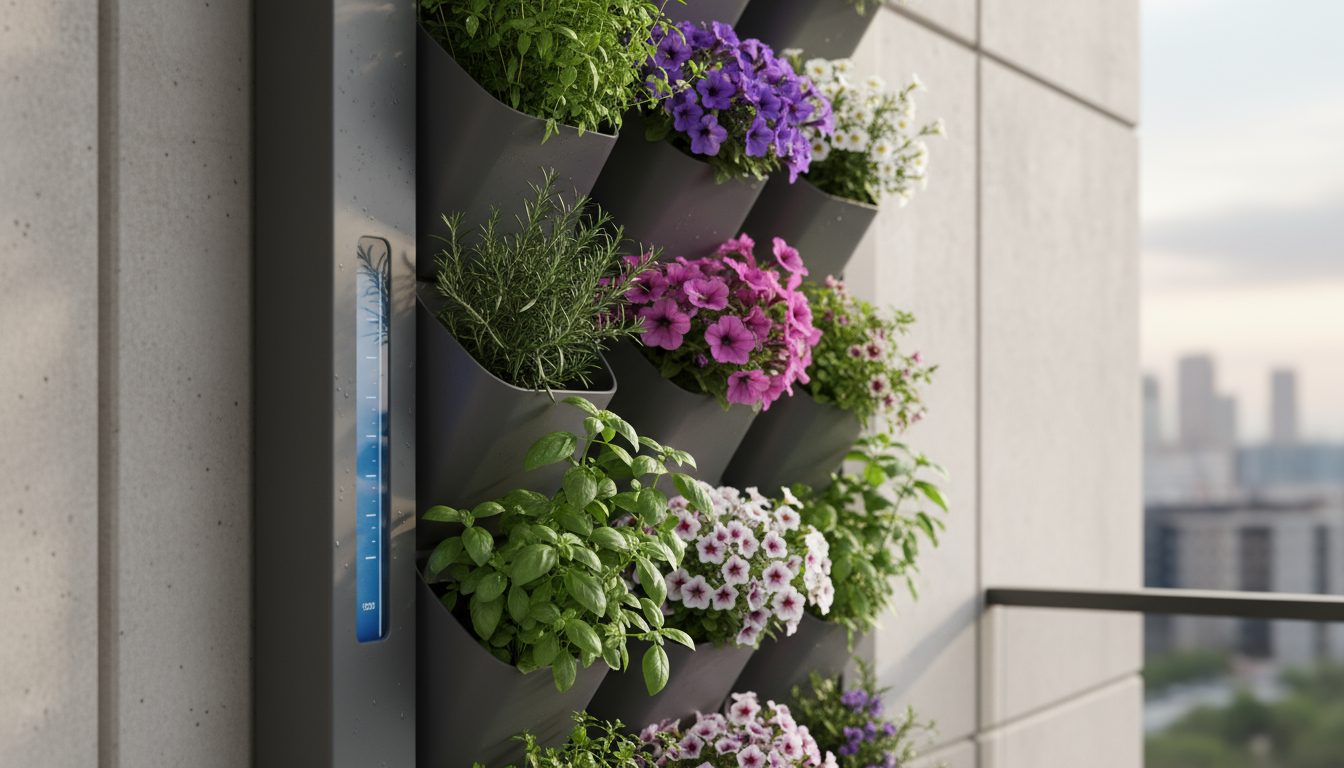
Compost Food Scraps (Even in Small Spaces)
Even in an apartment, you can divert food waste from landfills. A small indoor worm bin (vermicomposting) is odorless and incredibly efficient at turning kitchen scraps into rich fertilizer for your vertical garden.
By embracing these eco-friendly practices, your vertical garden becomes more than just a beautiful feature; it becomes a testament to sustainable living, providing you with fresh produce and a connection to nature, all while minimizing your impact on the planet.
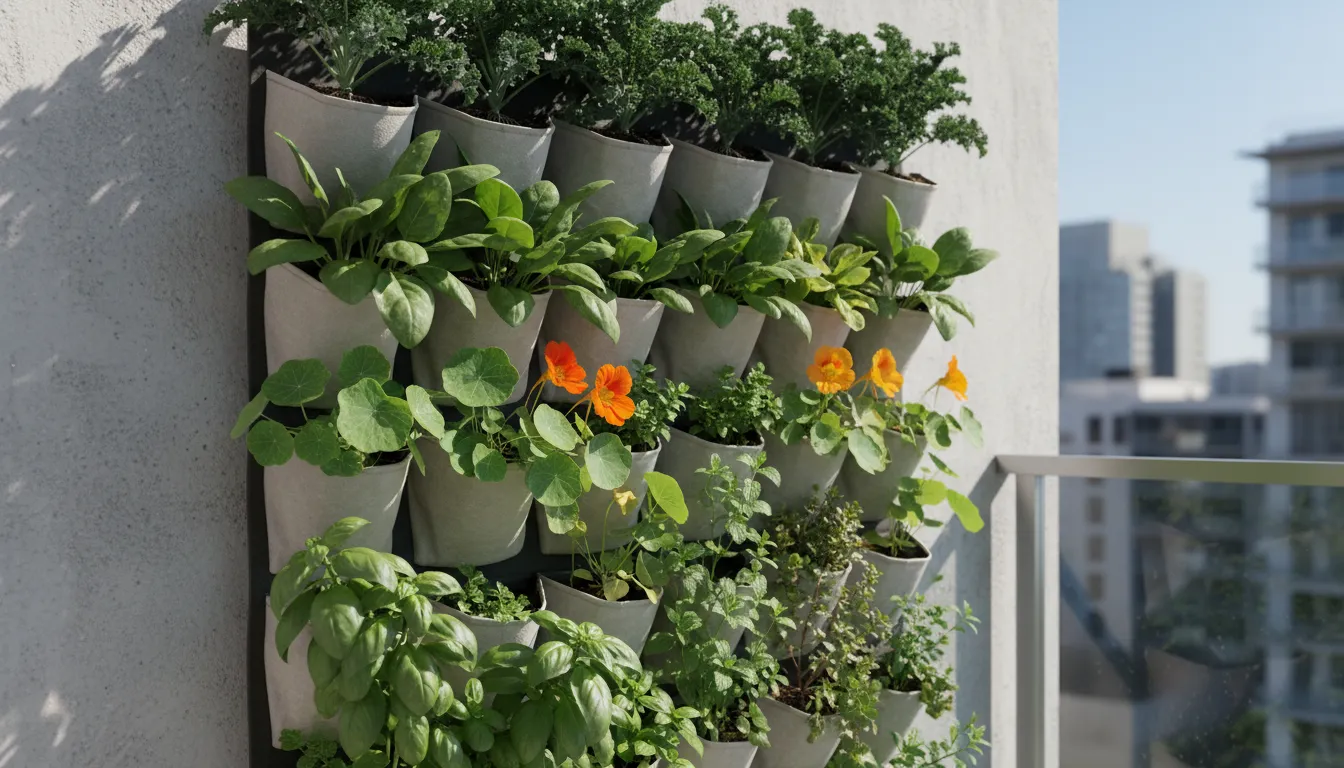
Frequently Asked Questions
What types of plants grow best in vertical gardens?
Plants with shallow root systems, compact growth habits, or those that naturally trail or climb are ideal. Excellent choices include leafy greens (lettuce, spinach, kale), most culinary herbs (basil, mint, rosemary), strawberries, compact cherry tomato varieties, bush beans, small peppers, and a wide array of flowers like petunias, nasturtiums, or impatiens. Succulents and air plants also thrive in many vertical setups, especially decorative ones. Always match your plant choice to the light conditions of your vertical garden location.
How often do I need to water a vertical garden?
Watering frequency depends heavily on several factors: the type of vertical system, the size of the plant containers, the type of plants, and environmental conditions (temperature, humidity, wind). Smaller containers and hotter weather require more frequent watering. Many vertical gardens need watering daily or every other day during peak growing season. Always check the soil moisture by feeling it with your finger; water when the top inch or two feels dry. Self-watering systems or drip irrigation can reduce manual watering frequency significantly.
Can I grow vegetables in a vertical garden in my apartment?
Absolutely! Vertical gardens are excellent for growing many edibles. You can grow herbs, leafy greens like lettuce and spinach, strawberries, radishes, bush beans, small peppers, and even compact varieties of cherry tomatoes or cucumbers. The key is choosing varieties that do not require deep root space and matching them to your available sunlight. Vertical systems like pallet gardens, rain gutters, or PVC pipe systems are particularly well-suited for productive vegetable growing.
What about drainage? Will water damage my apartment or balcony?
Proper drainage is crucial for plant health and preventing damage. All containers or pockets in your vertical garden must have drainage holes to prevent root rot. If indoors or on a balcony above other units, you must incorporate a system to catch excess water. This can be individual drip trays under pots, a continuous catch basin at the bottom of a tiered system, or a waterproof backing for fabric pocket planters. Always ensure runoff is contained and diverted away from structures to prevent water damage or nuisance to neighbors.
Are vertical gardens heavy? What if my wall can’t support the weight?
A vertical garden can become surprisingly heavy once filled with wet soil, water, and mature plants. For example, a square foot of wet soil can weigh 80-100 pounds. You must assess the weight capacity of your wall or railing. For lighter options, consider fabric pocket planters, hanging shoe organizers, or freestanding ladder shelves. For heavier systems like large pallet gardens or modular living walls, ensure they are securely mounted into wall studs or appropriate anchors, or consider freestanding options. Always prioritize safety in installation and consult your landlord if you are a renter.
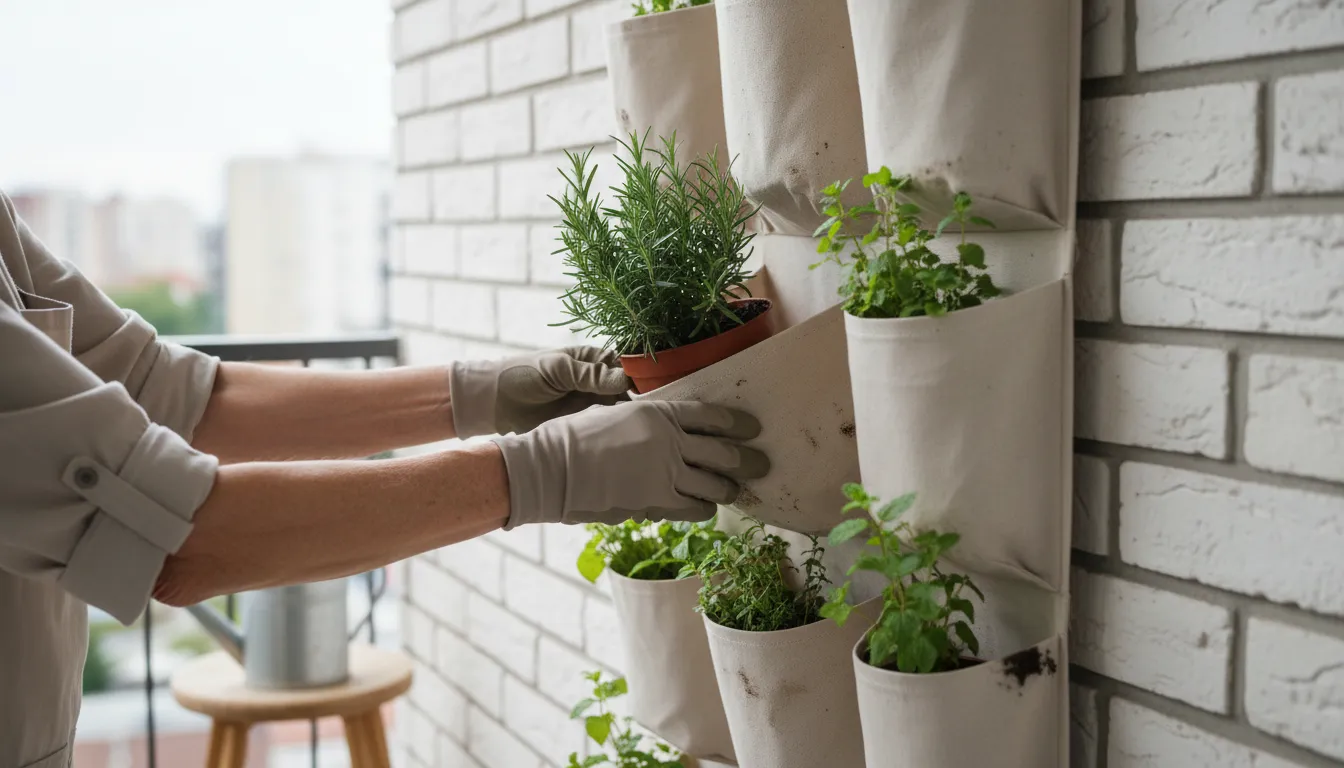
Getting Started with Your Apartment Vertical Garden
Embarking on your vertical gardening journey in an apartment is an exciting and rewarding endeavor. You have discovered 15 creative ways to transform your small space into a vibrant, productive oasis, along with essential guidance on plant selection, setup, and maintenance. Remember, every successful garden starts with a single step, and the beauty of vertical gardening is its adaptability and accessibility.
Do not feel overwhelmed by all the options. Begin by choosing one idea that resonates with you and fits your current space and budget. Perhaps a simple hanging shoe organizer for herbs on your balcony, or a small ladder shelf for succulents by a sunny window. Experiment with a few easy-to-grow plants to build your confidence.
Your apartment vertical garden will not only provide fresh produce and beautiful aesthetics but also offer a calming connection to nature in your urban environment. You are not just growing plants; you are cultivating a lifestyle that embraces sustainability, creativity, and the joy of green living in any space, no matter how small. Grab your trowel, select your plants, and start building your elevated green sanctuary today.
For trustworthy gardening information, visit:
Michigan State University Extension — Gardening,
Ohio State University Extension — Gardening,
University of Wisconsin Extension — Horticulture and
Iowa State University Extension — Yard & Garden. These organizations provide expert, research-based advice for gardeners at all levels.
Disclaimer: This article is for informational purposes only and is not a substitute for professional gardening advice. Always consult local extension services or horticulture experts for region-specific guidance.


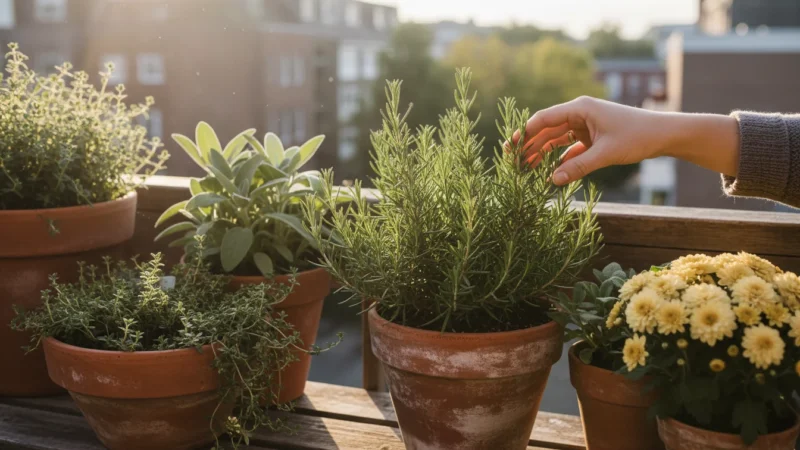
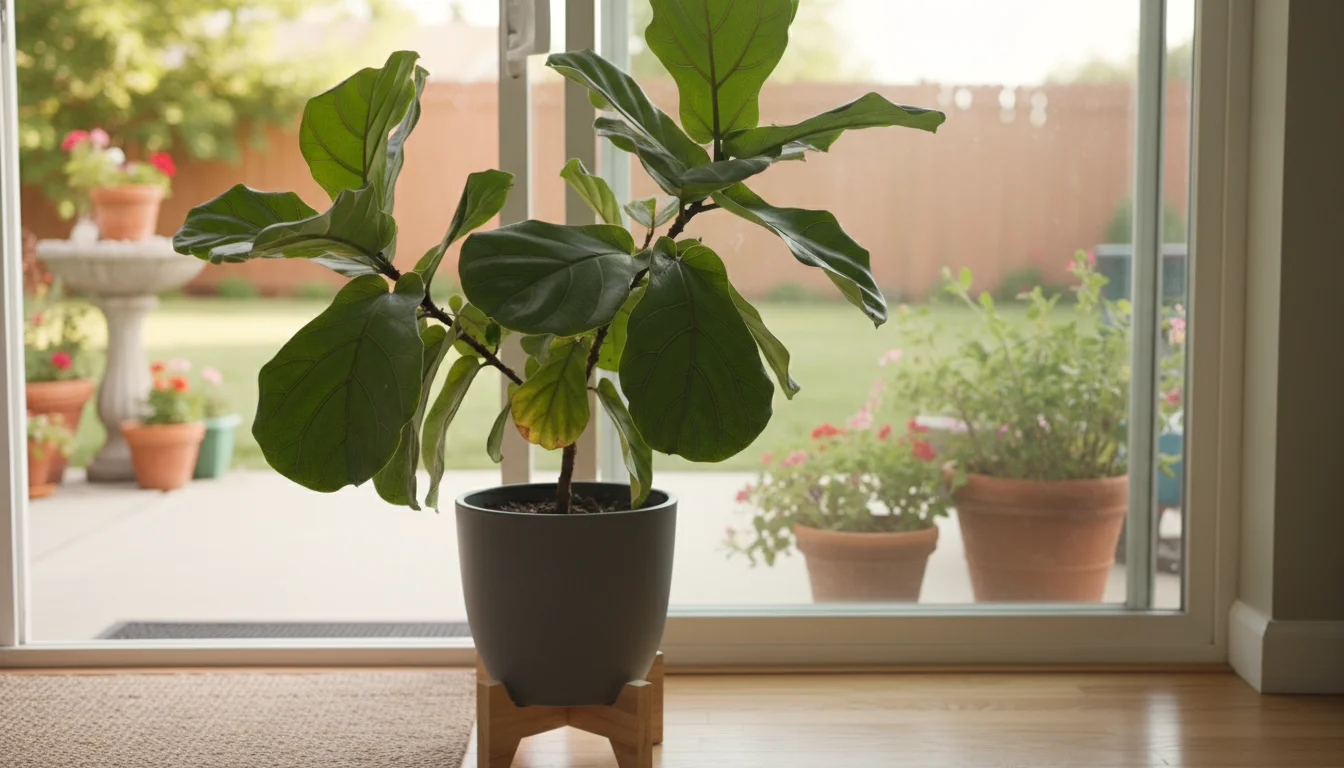

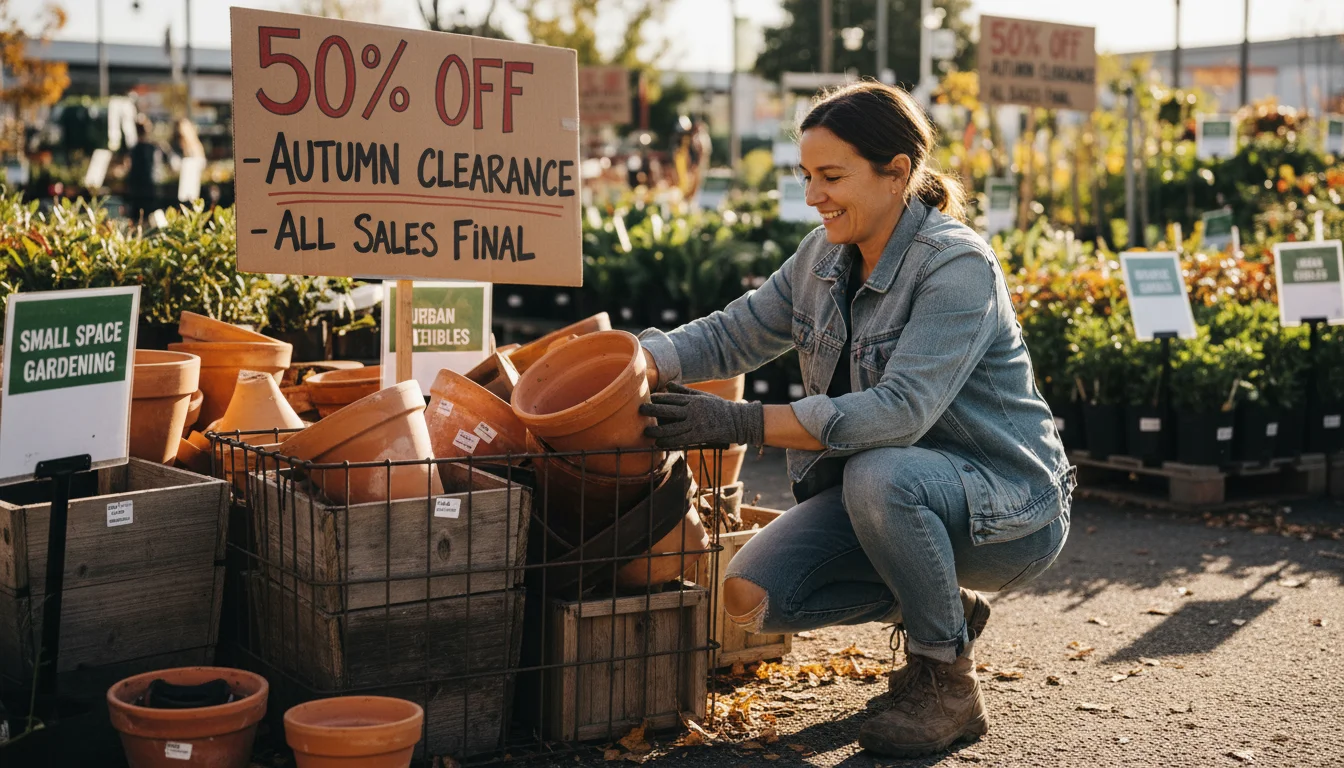
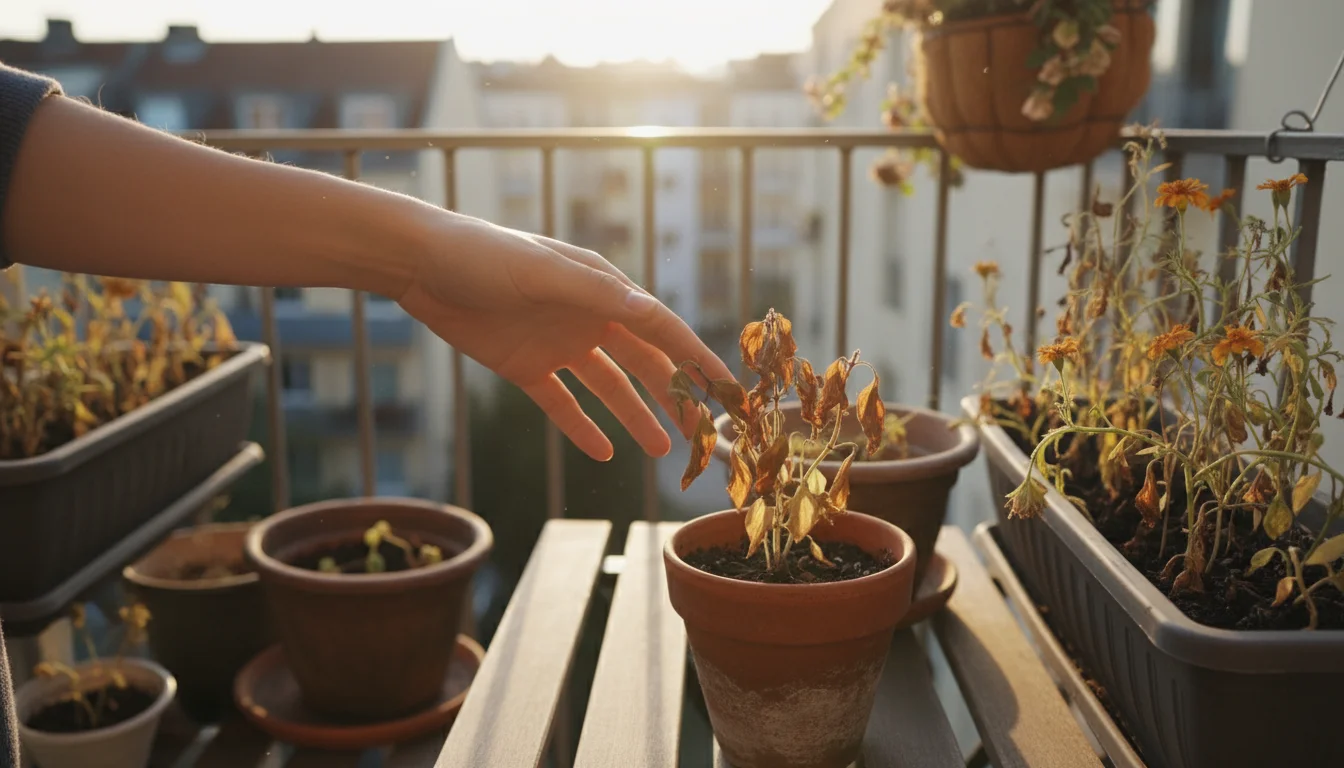
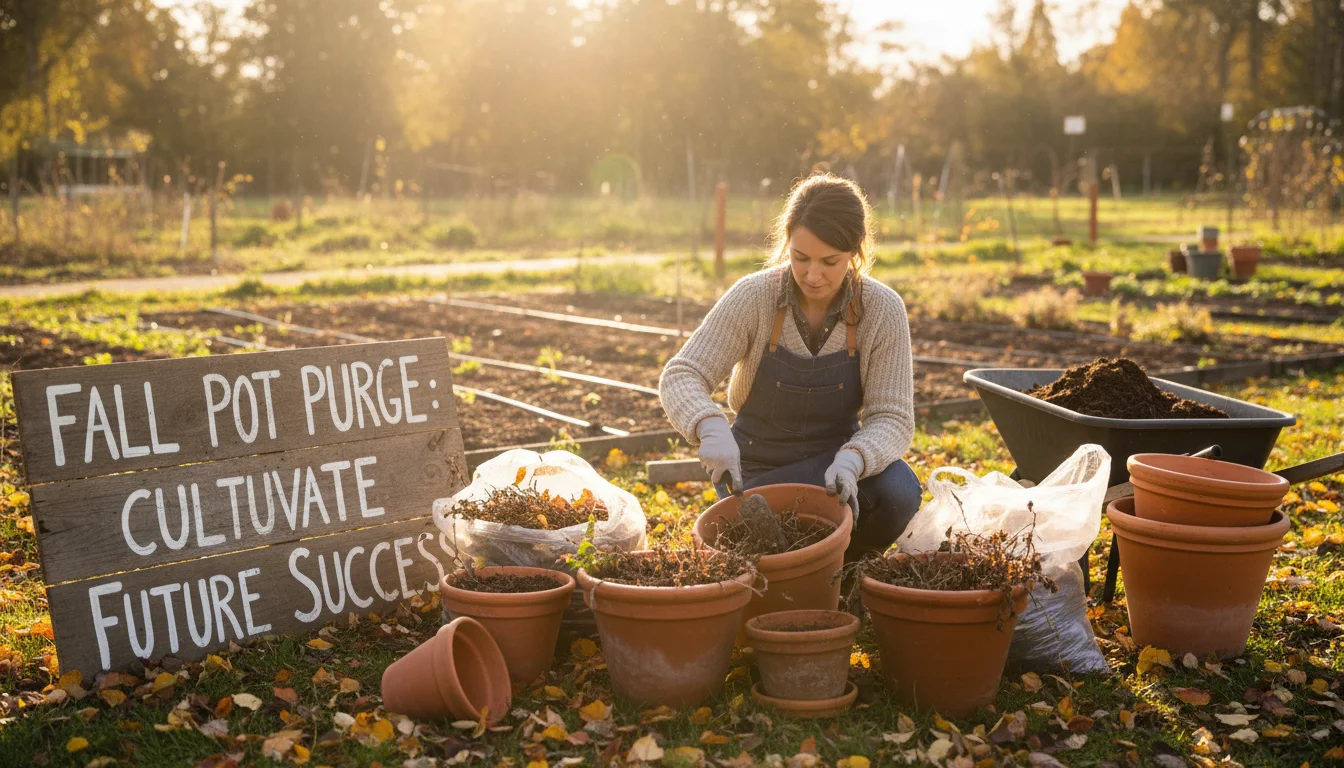
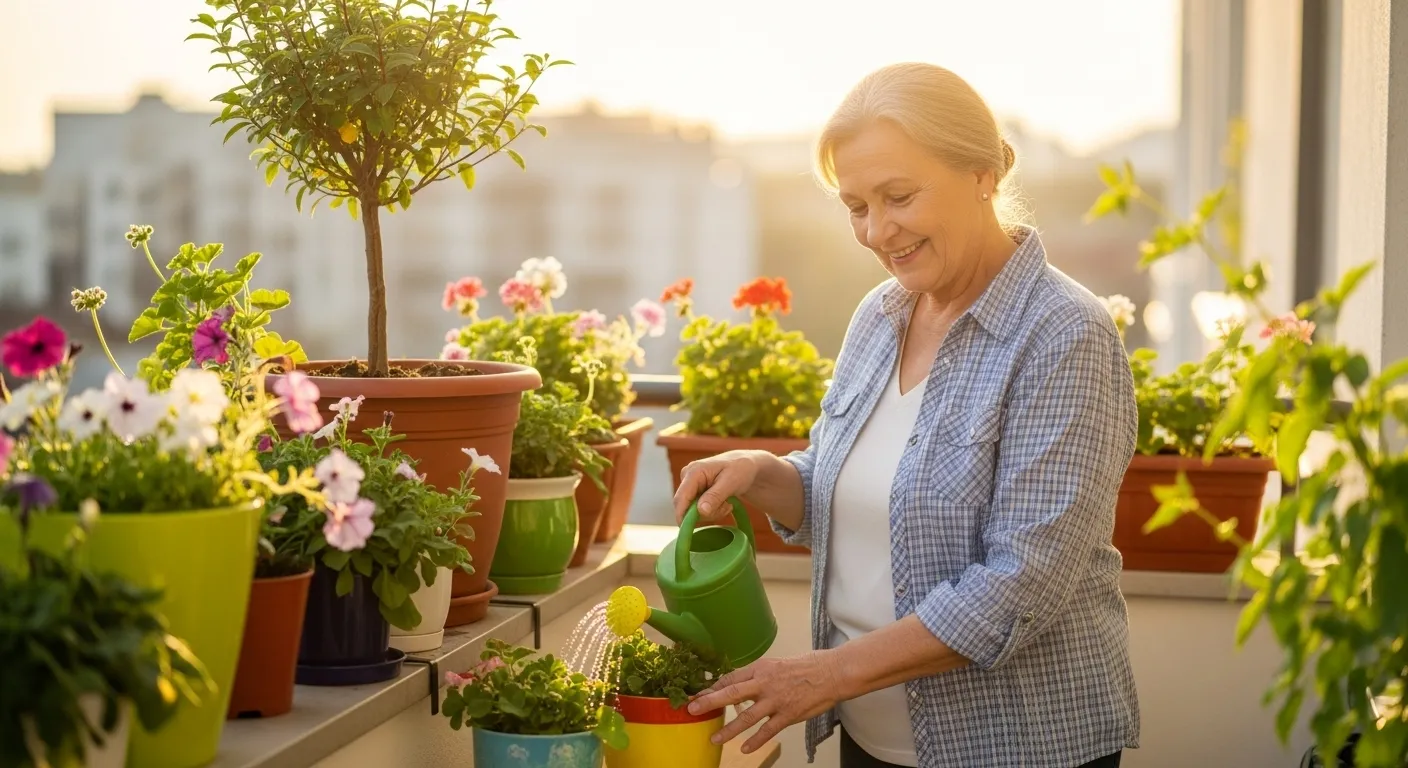

Leave a Reply